Ashland RV Park, Ashland, Nebraska
(After the death of his wife Sarah) Abraham took another wife, whose name was Keturah. She bore him (six sons)…. Abraham left everything he owned to Isaac. But while he was still living, he gave gifts to the sons of his concubines and sent them away from his son Isaac to the land of the east. Altogether, Abraham lived a hundred and seventy-five years. (35 years after Isaac married Rebekah) Then Abraham breathed his last and died at a good old age… His sons Isaac and Ishmael buried him in the cave….with his wife Sarah. After Abraham’s death, God blessed his son Isaac… ~ Genesis 25:1-11 I didn’t remember that Abraham took another wife, but I did recognize her name when I read it. I also didn’t realize that he had concubines. It makes me wonder why God chose to bless him so abundantly, but I guess it says more about God and his grace and forgiveness and loyalty to His promises, than it does about Abraham. Goes to show, we should never place people on too high a pedestal. And no one is above God’s forgiveness, mercy and love. And if you think about it, aren’t you glad? God be praised that He would love and use one such as I!
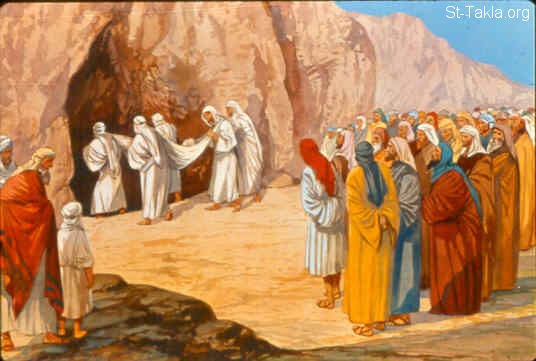
Once again, we awoke to a gloomy day. A little chilly even. Well, at least compared to the 90s we’ve been experiencing, the 70s of today seemed a bit cool!
We parked outside the old Union Station building in Omaha.
After being chosen as the eastern terminus of the first transcontinental railroad in 1862, Omaha became a major transportation center. The Union Station terminal building was completed and opened to passenger traffic on January 15, 1931. The last train left the station at 2am on May 2, 1971, after Congress established the National Railroad Passenger Corporation (Amtrak) in 1970 to handle all railroad passenger travel. Why? “To preserve a basic level of intercity passenger rail service, while relieving private railroad companies of the obligation to provide money-losing passenger service.” (fas.org)
Union Pacific Railroad gifted the building to Omaha in 1973, and it’s been renovated and hosts a museum now. We were museumed out after yesterday, so we skipped that part and just walked around the first floor. That was enough museum for us.




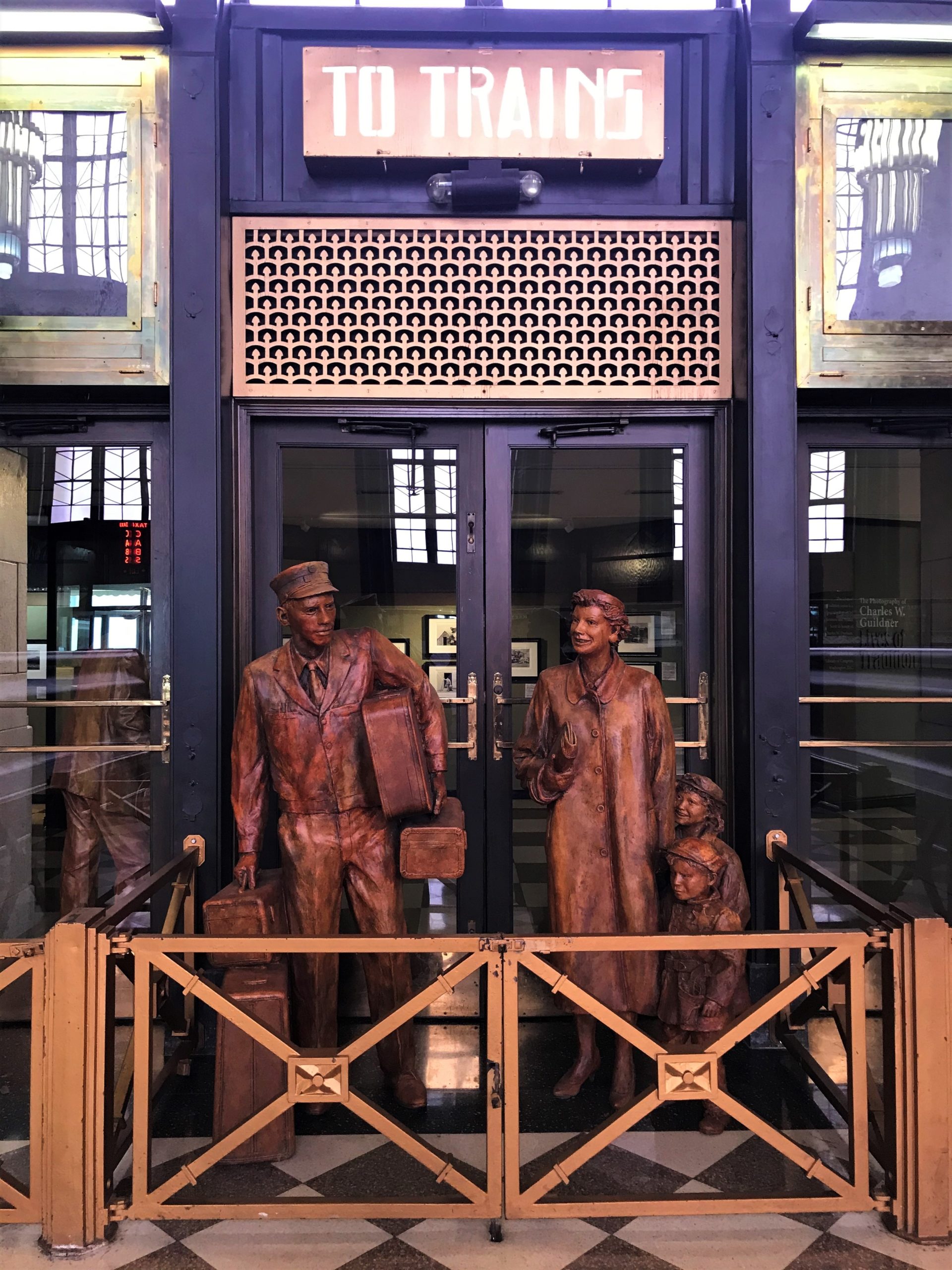
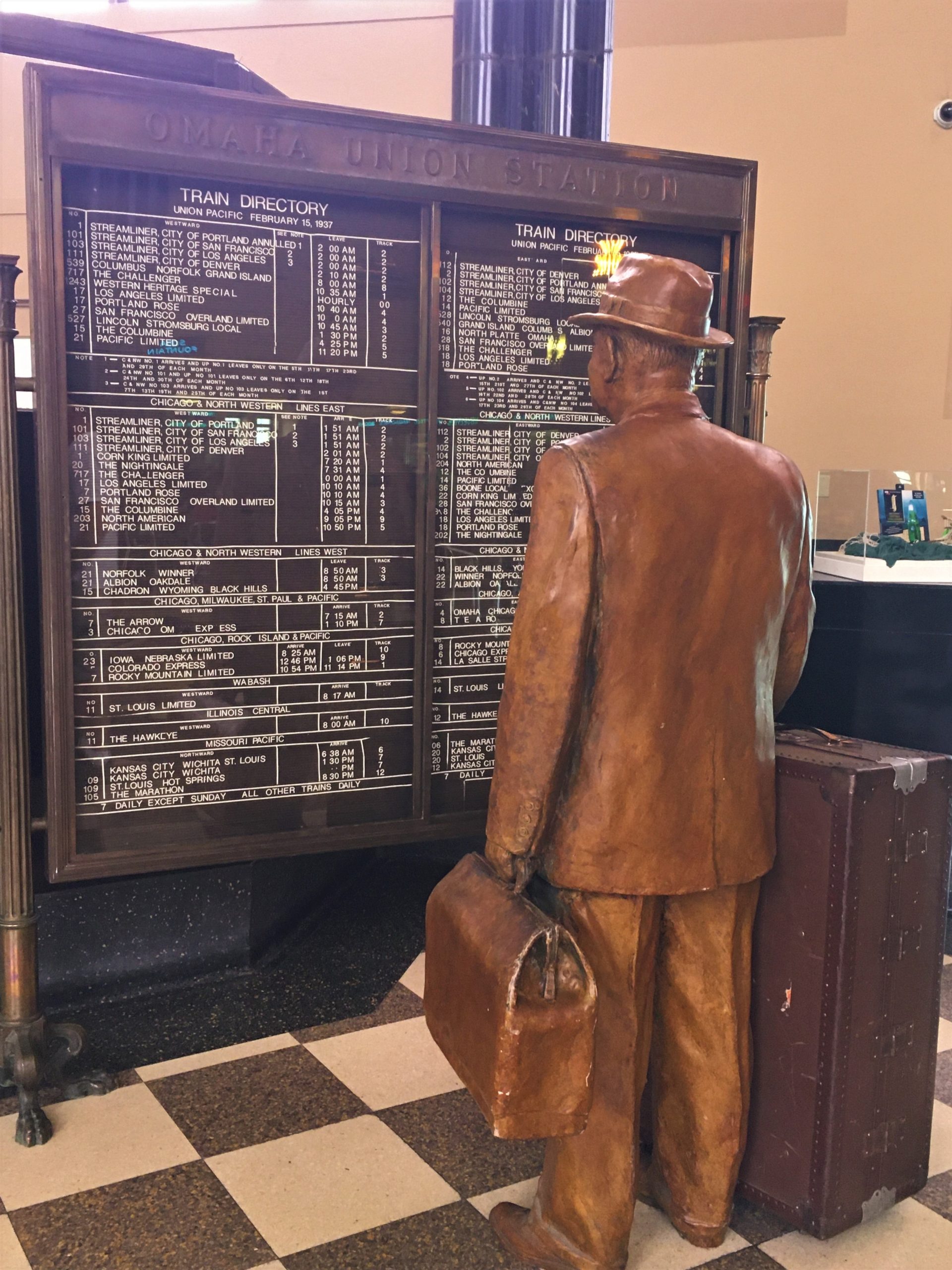


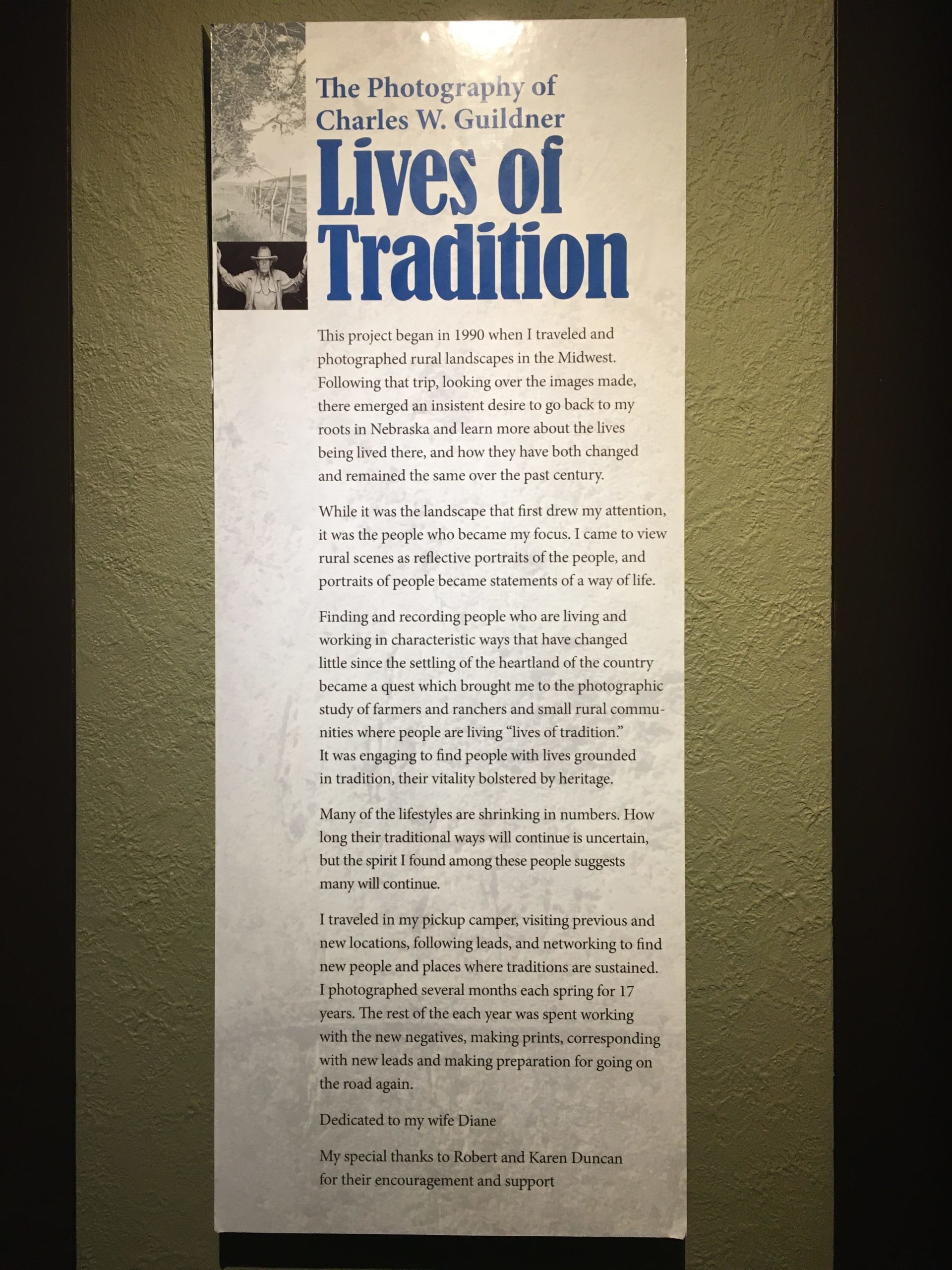


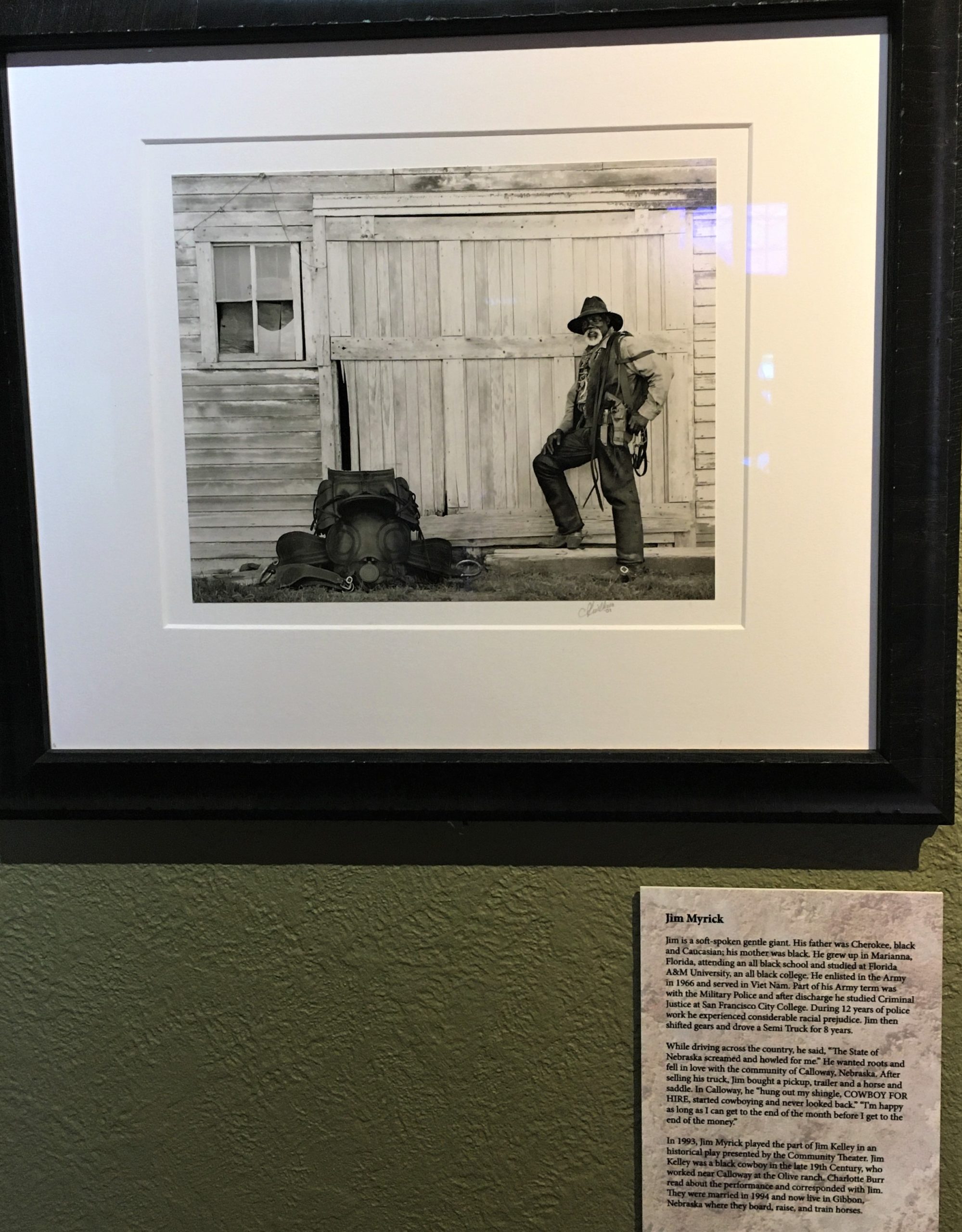

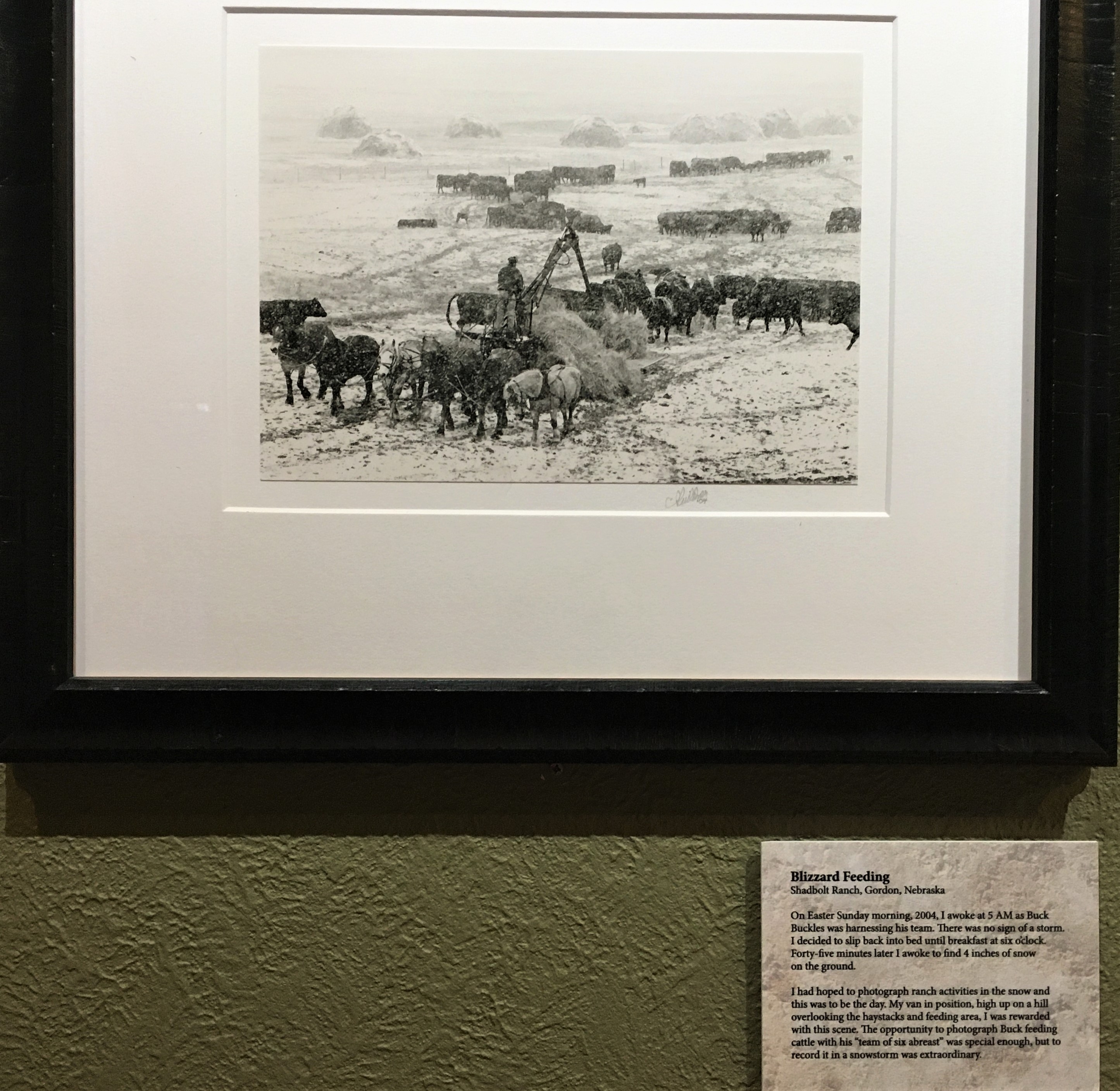


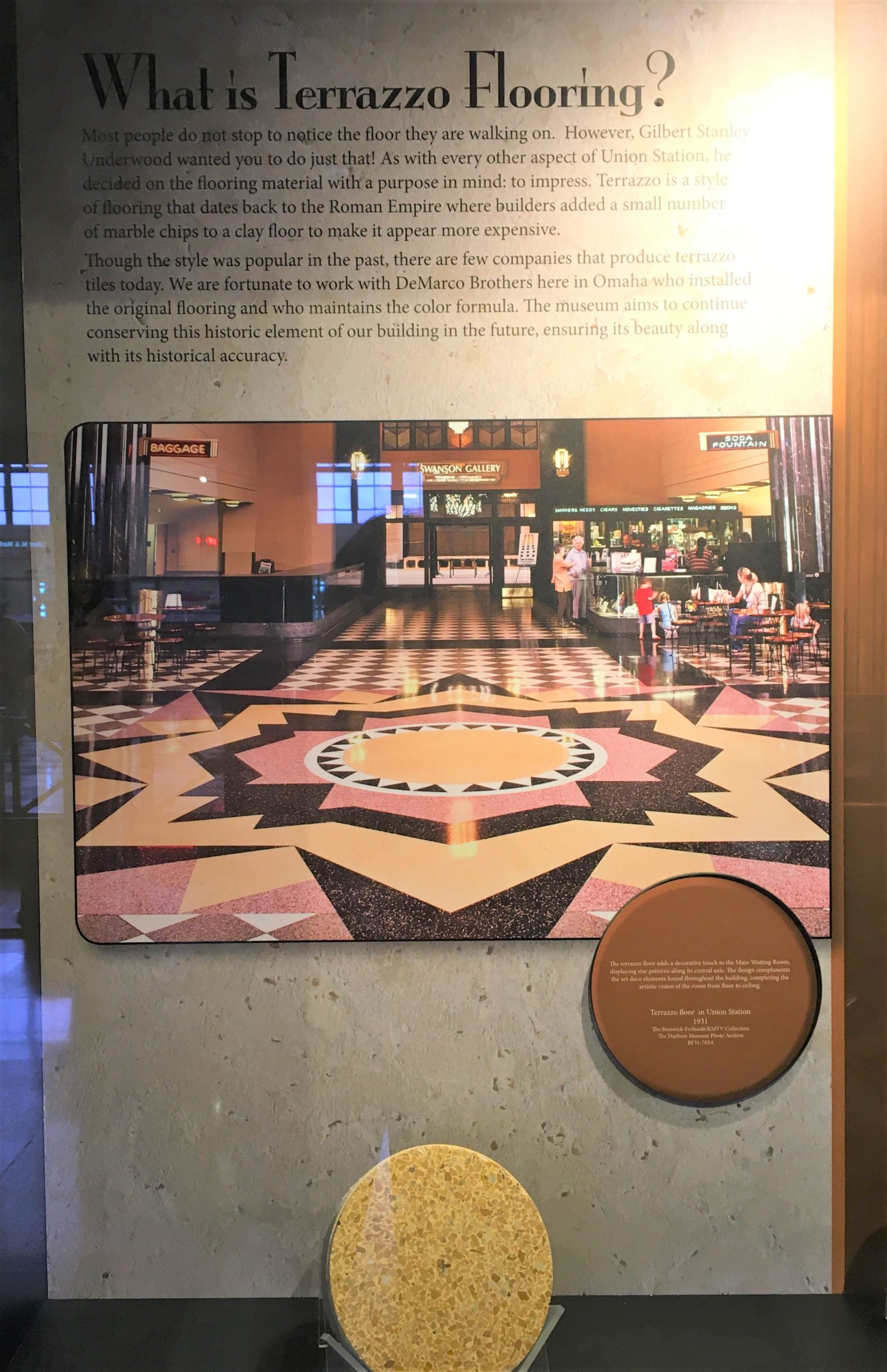
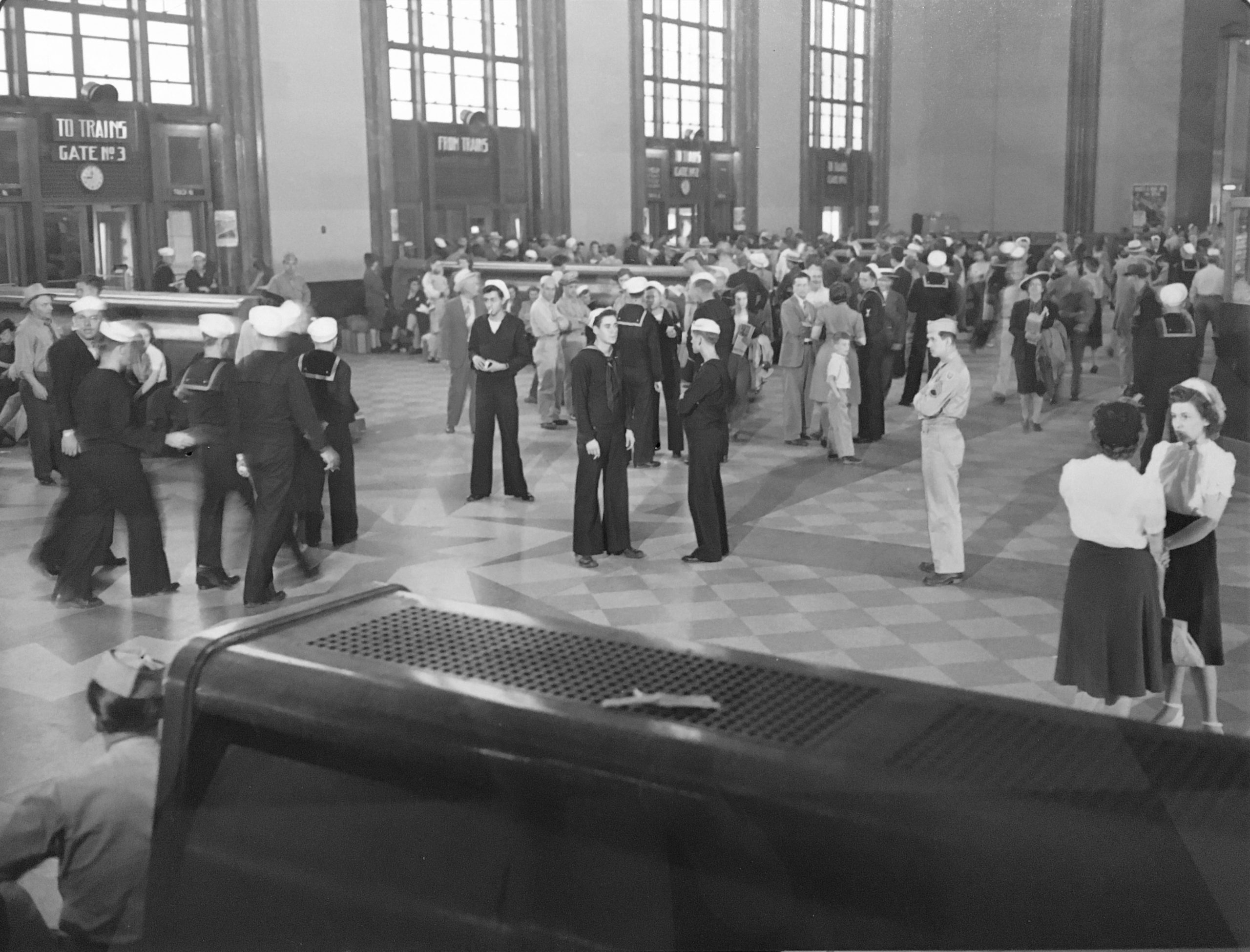



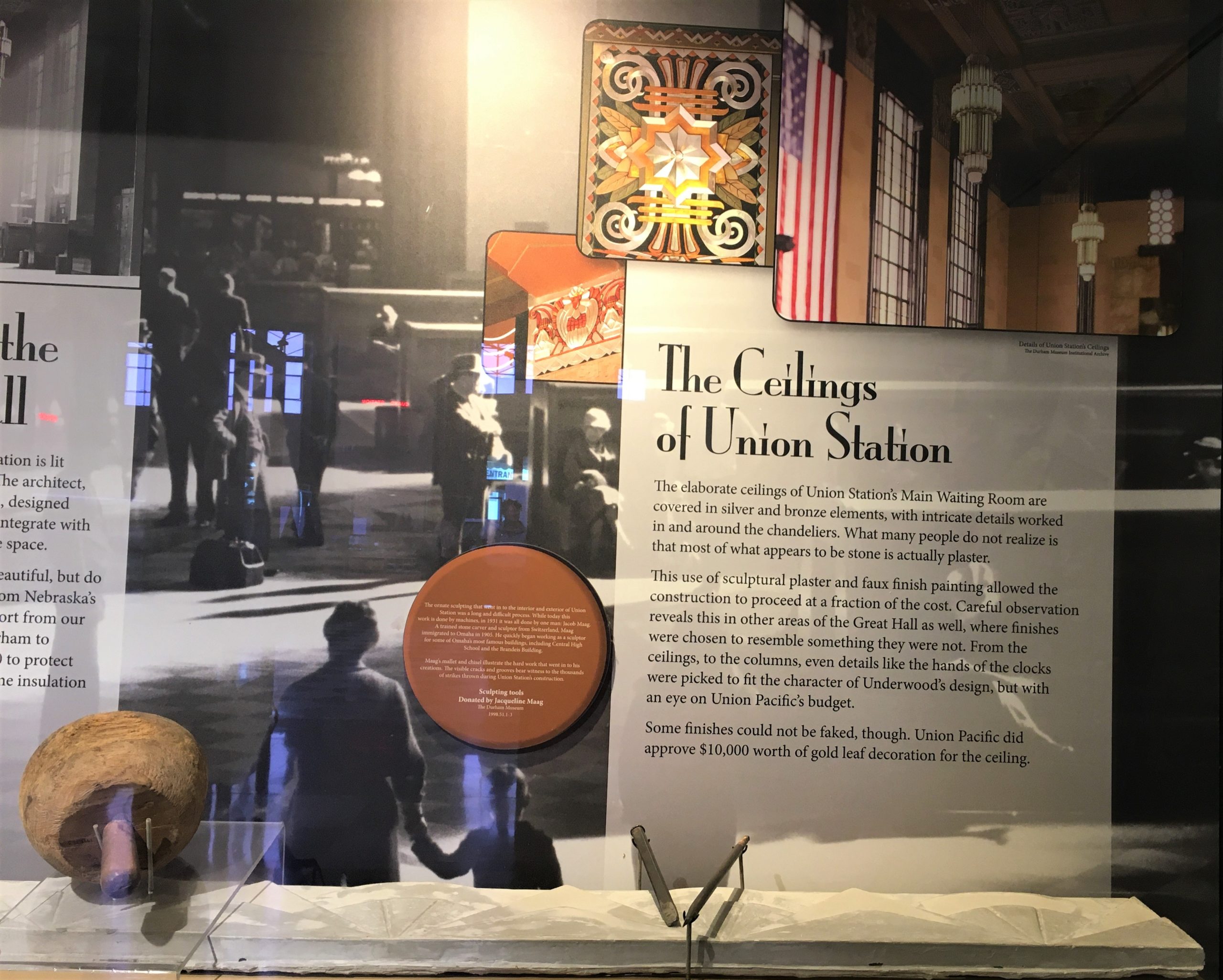

Such craftsmanship in these old buildings! The likes of which we will most likely never see again.
We even splurged and ordered a real ice cream soda from the soda fountain. Strawberry! Yummy!

We got back in the Jeep and crossed the border back into Iowa to a town called Council Bluffs.

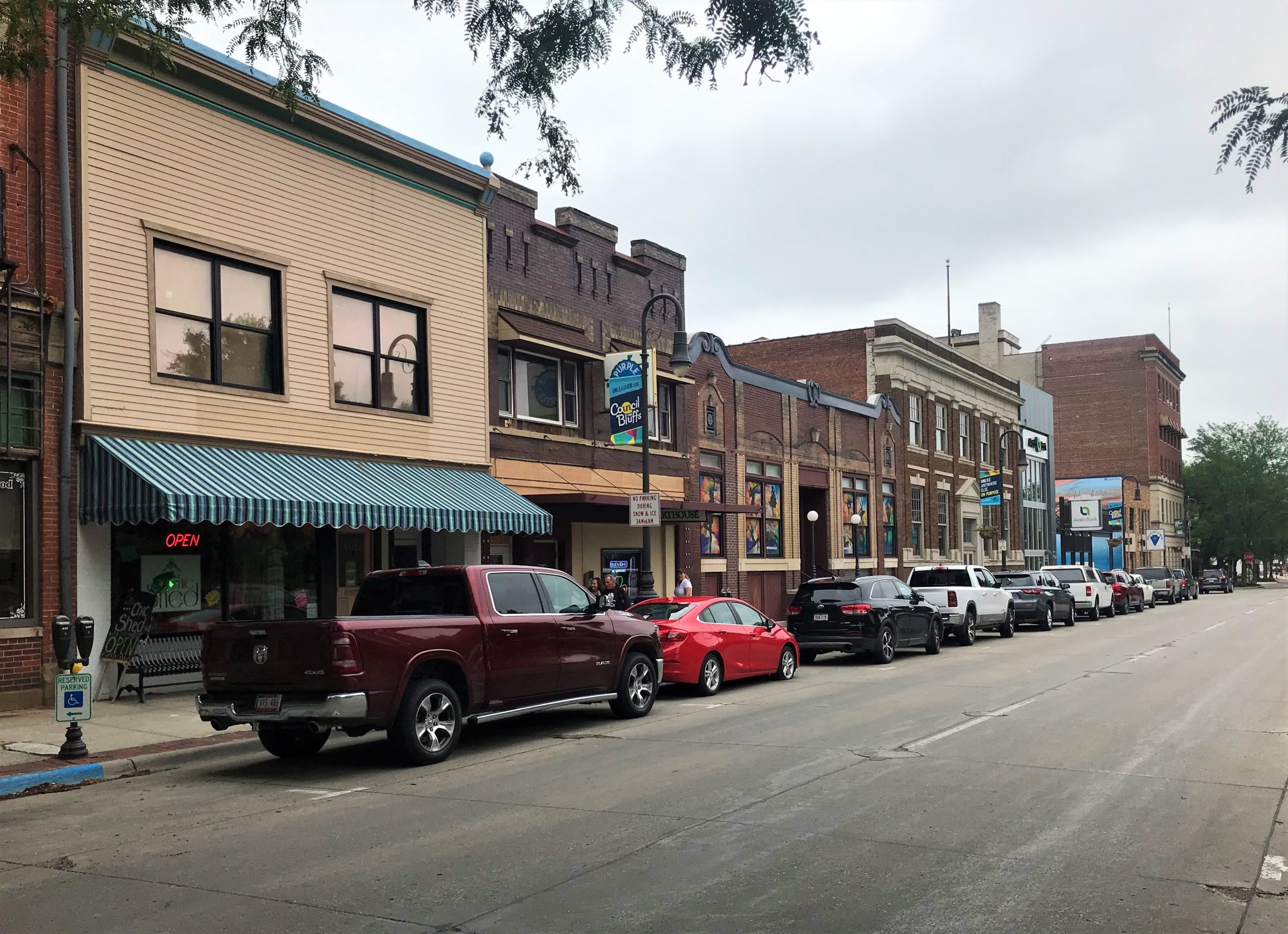
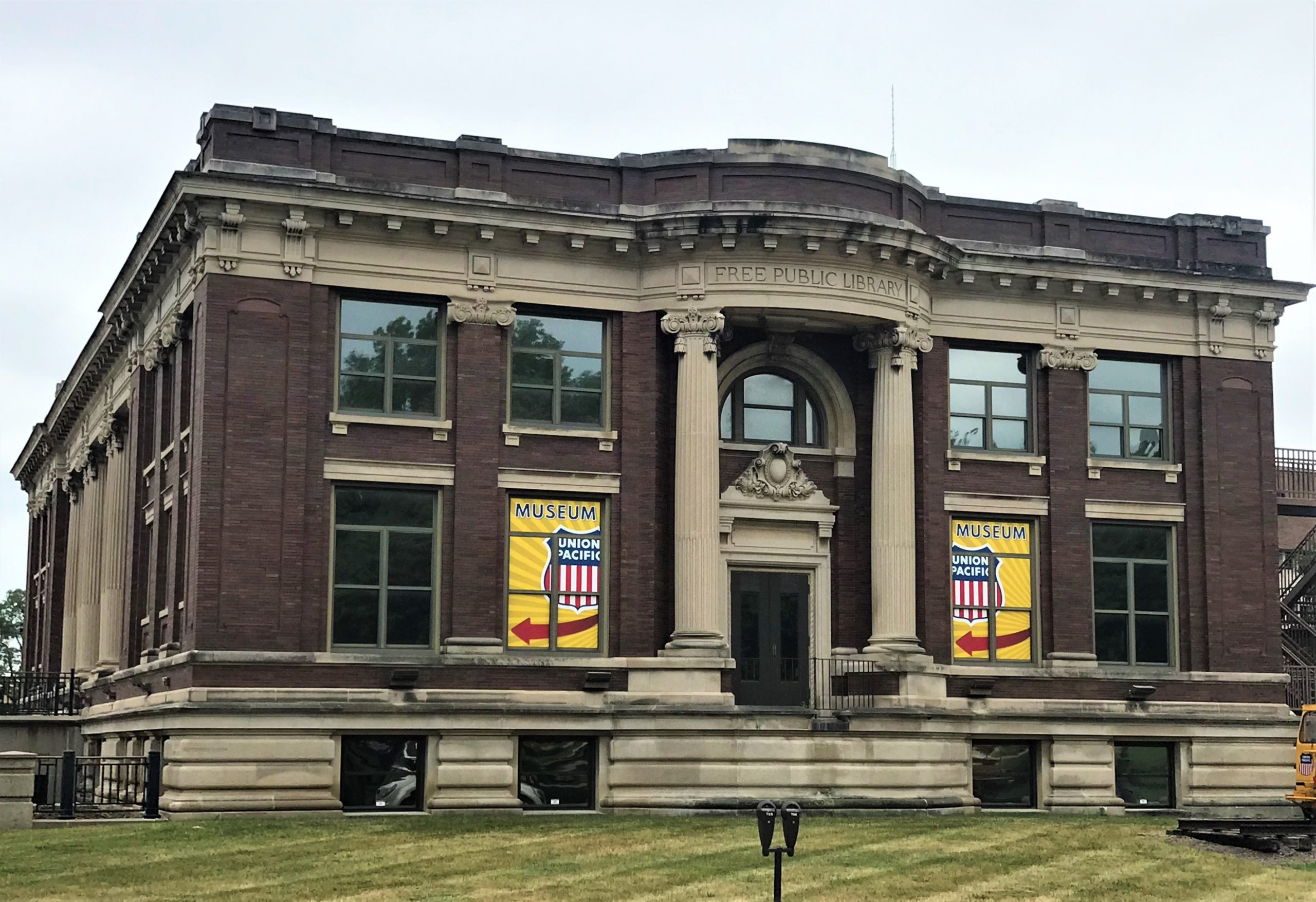
Council Bluffs is just on the other side, right next to Omaha, and they had a few interesting things there we wanted to check out. Three things I found when I searched atlasobscura.com. I’m saving the best stop for last. 😊
There was the Lincoln Monument:
WITH A LONGTIME INTEREST IN building a transcontinental railroad, Lincoln sought out Grenville Mellen Dodge while visiting Council Bluffs, Iowa, in 1859. He knew Dodge had extensively surveyed west of the Missouri River, and at a meeting in the Pacific Hotel he asked the railroad engineer about the best route to the Pacific. Dodge recommended the Platte Valley route based on experience, and Lincoln took his word as gospel.
A year later, Lincoln was elected president, and three years after that, Lincoln signed an executive order that officially designated Council Bluffs the eastern terminus for the rail line linking east and west.
Dodge would go on to distinguish himself during the U.S. Civil War, initially commanding the Fourth Iowa Infantry, rising through the ranks from captain to general. When the war ended in 1865, Dodge returned to Council Bluffs and eventually took a job as surveyor and chief engineer of the Union Pacific Railroad.
The first transcontinental railroad was completed in 1869, fulfilling Lincoln’s vision and forever transforming North America and shaping U.S. history into the 20th century and beyond.
In 1911, to commemorate Lincoln’s crucial 1859 visit, the stone obelisk was erected on the spot where Lincoln stood, looking west across the Missouri River Valley and dreaming of a transcontinental railroad. ~atlasobscura.com

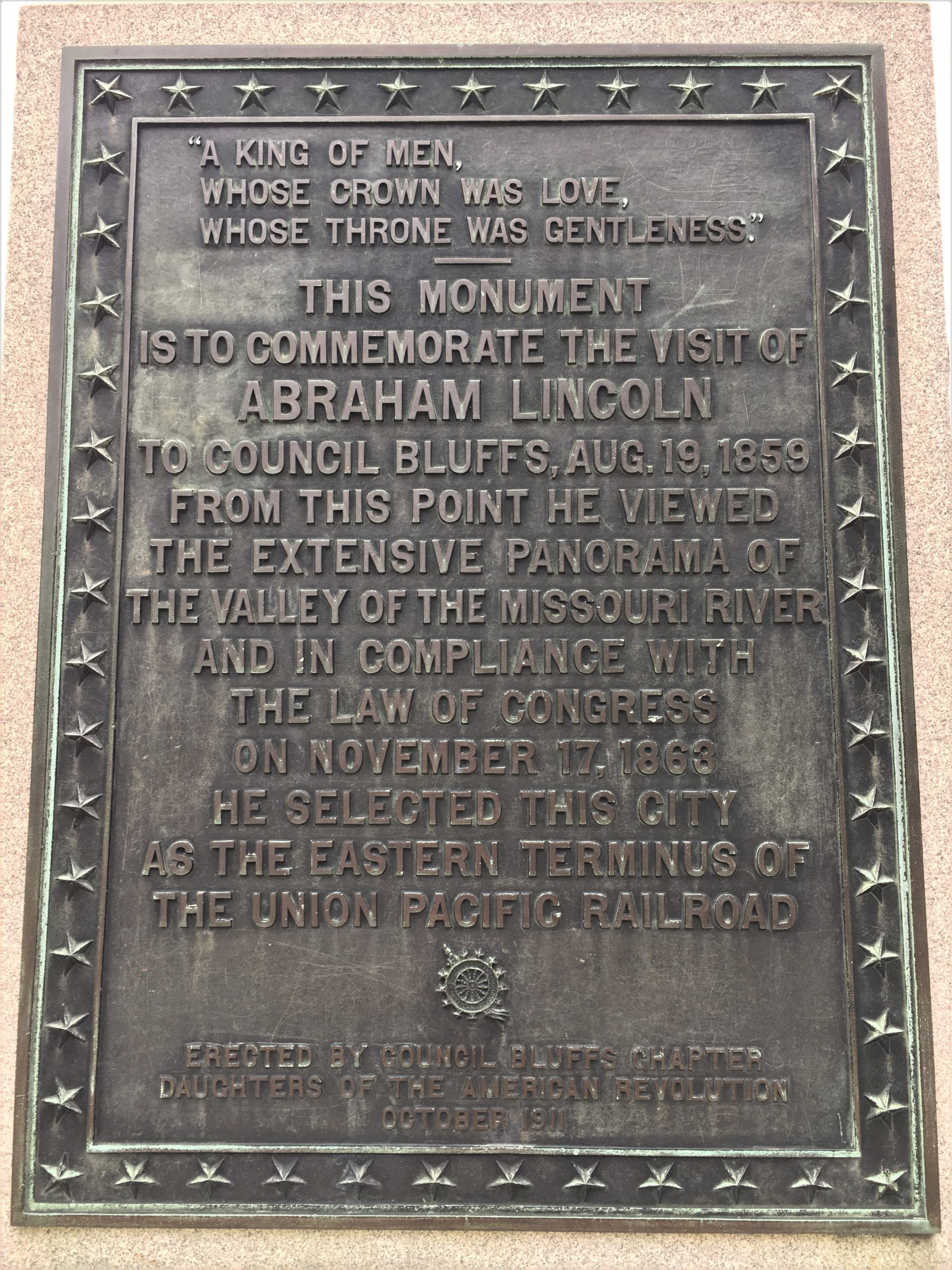

There were a couple of nice homes up here too and a guy sitting on his porch enjoying it. : )
And the Golden Spike, which stands in a seedy-looking area:
THE UNION PACIFIC RAILROAD IS a big part of the Council Bluffs community, and with it comes the history. Part of the local history includes Union Pacific, a Cecil B. DeMille movie that premiered in the neighboring city of Omaha, Nebraska, in 1939.
To attract attention to their own community, Council Bluffs erected a 56-foot-tall railroad spike for the movie premiere. The Golden Spike is 100 times the size of a normal spike. Union Pacific designated the location as Mile Post Zero to help with drawing attention to the site. On April 28, 1939, during the dedication of the Gold Spike, DeMille himself said he expected the monument to last 100 years.
The monument was built in 1939 by the railway tracks, as most of the tourists came via train. In 1955, there was talk about moving the spike to an area that was more automobile-friendly, as by then, most people drove into town. The plans to move the massive structure fell through, and for decades, the spike fell into decay. Fortunately, it has since been preserved. ~ atlasobscura.com

We parked in an unused parking lot and walked over.
There were vagabonds lying in the park.

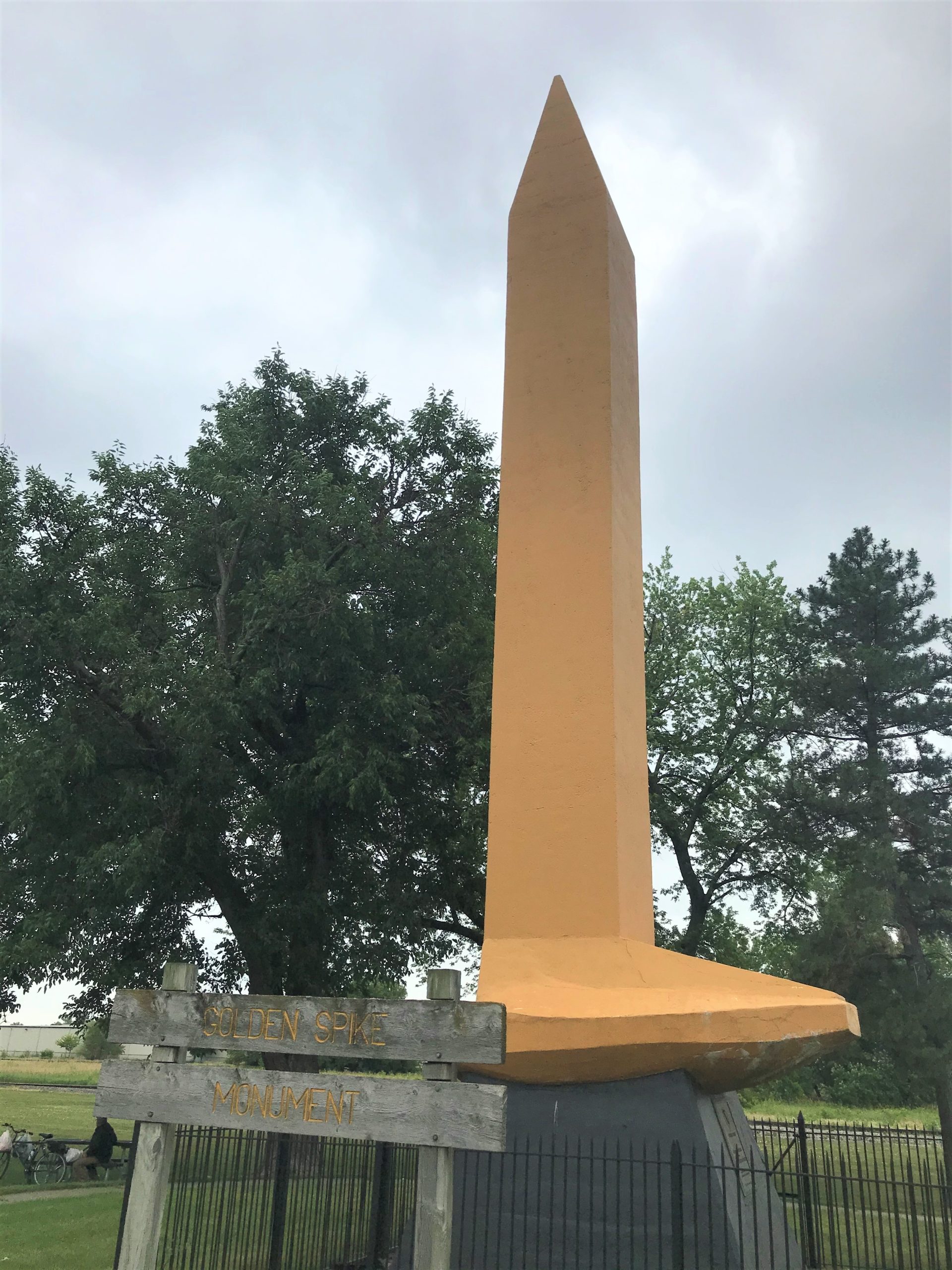

And for the best and definitely most interesting stop today, we have the Squirrel Cage Jail:
LOCATED IN COUNCIL BLUFFS, IOWA, the Pottawattamie Jailhouse, better known as the “Squirrel Cage Jail” is one of only three remaining “rotary jails,” all of which stand as examples of a brief obsession with keeping criminals in rotating cells.
Built in 1885, the jail was constructed to minimize the interaction of jailer and convict by twirling the cells around. The basic idea behind the design was that the cells were all located on a central carousel that would, at the turning of a hand-crank, spin so that only one inmate’s holding area could be accessed at a time, via the single entryway. While most of the rotary jails built around this time had only one level of cells, the Council Bluffs jail was created with three stacked levels of holding cells. The combined effect of the tall cell structure made it look like the sort of cage one might hold a small animal in, hence its popular nickname.
By the 1960s, the massive metal turntable was not faring so well and would frequently become stuck. The jail was in active use until 1969 when it finally closed its rotating doors to further criminals. After its closure, the jail was taken over by the Historical Society of Pottawattamie County and it was designated as a museum site.
Today visitors to the historic mechanical jail can still come and inspect the once whirling hoosegow. Unfortunately the cage no longer turns, but the site is a fascinating look at one of the wilder innovations in modern incarceration. ~ atlasobscura.com
After reading that, is it any wonder we wanted to check it out?

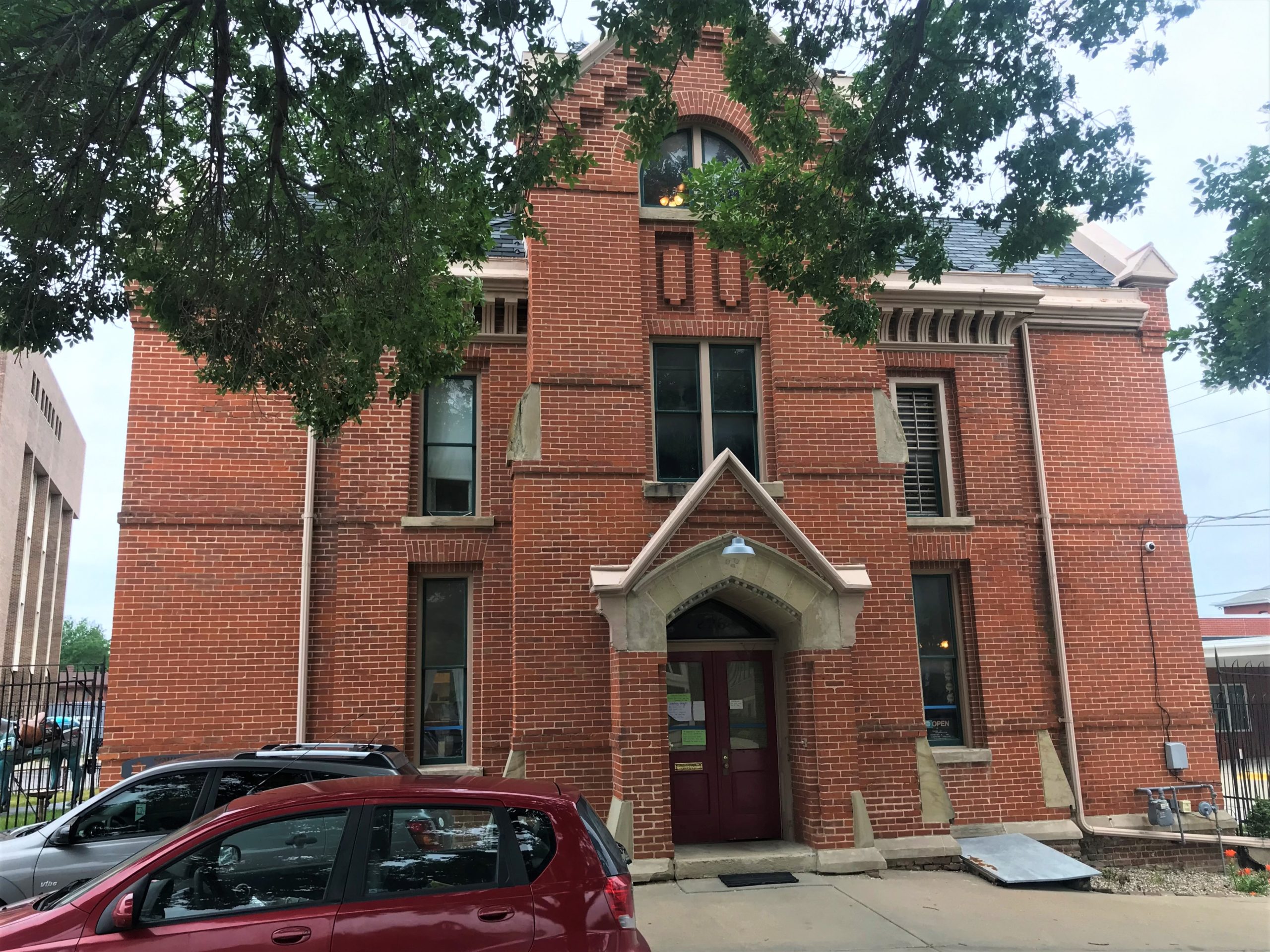
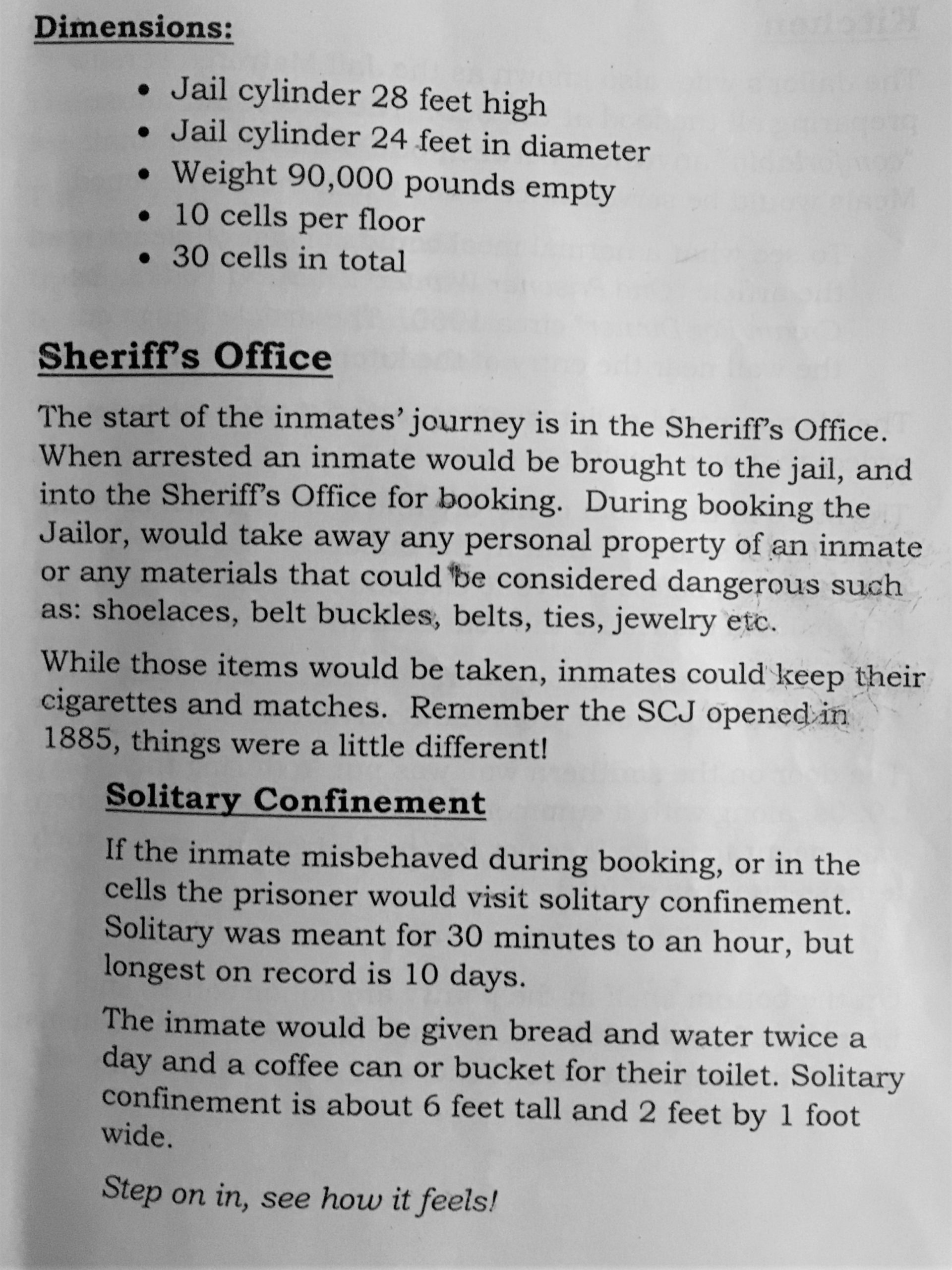

You have to stand, or slump down sideways, and I think a larger person would have trouble turning around.
It was right where you buy entry tickets and the girl said the longest time served in here was 10 days.
I can’t imagine!!
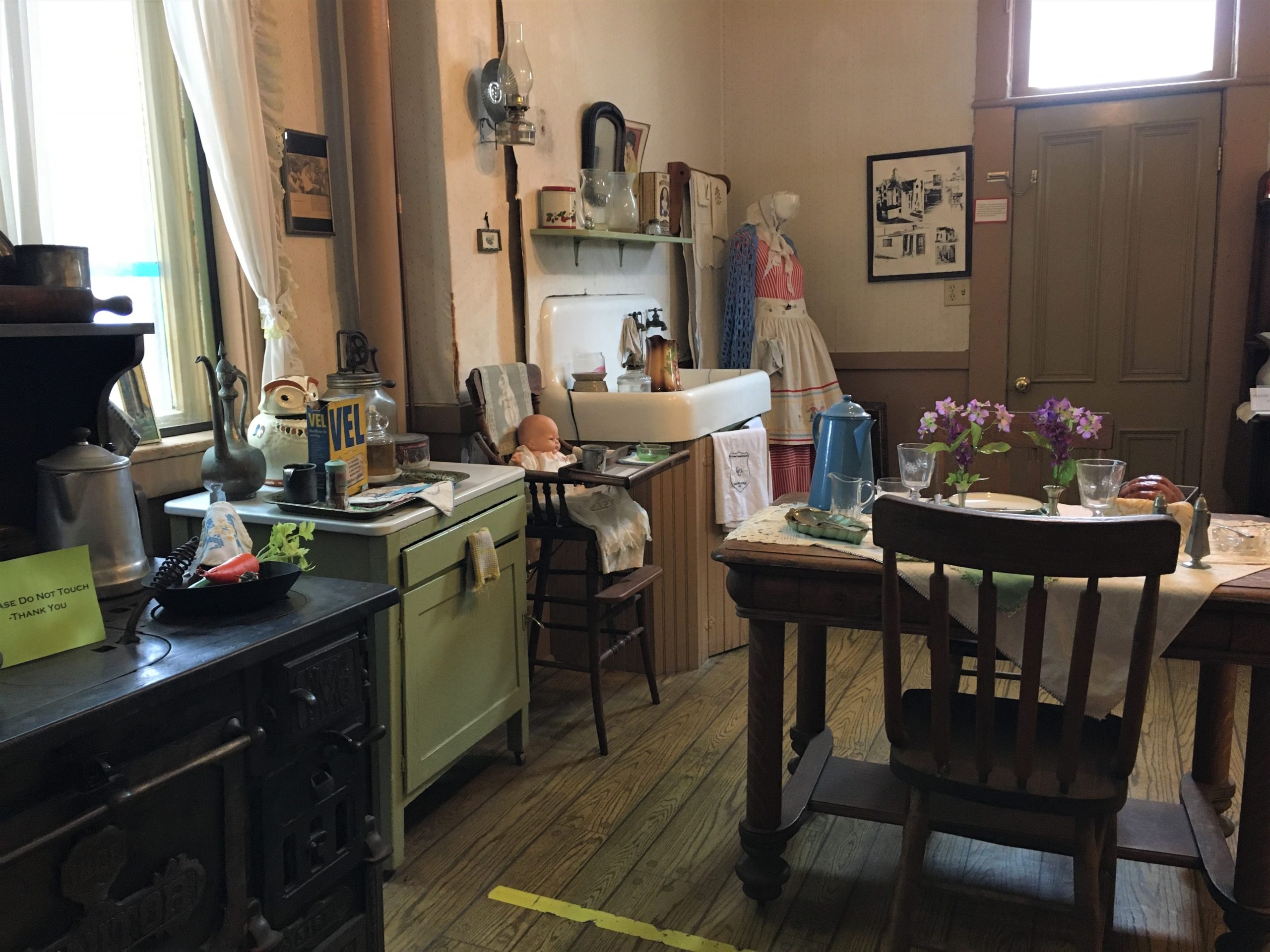

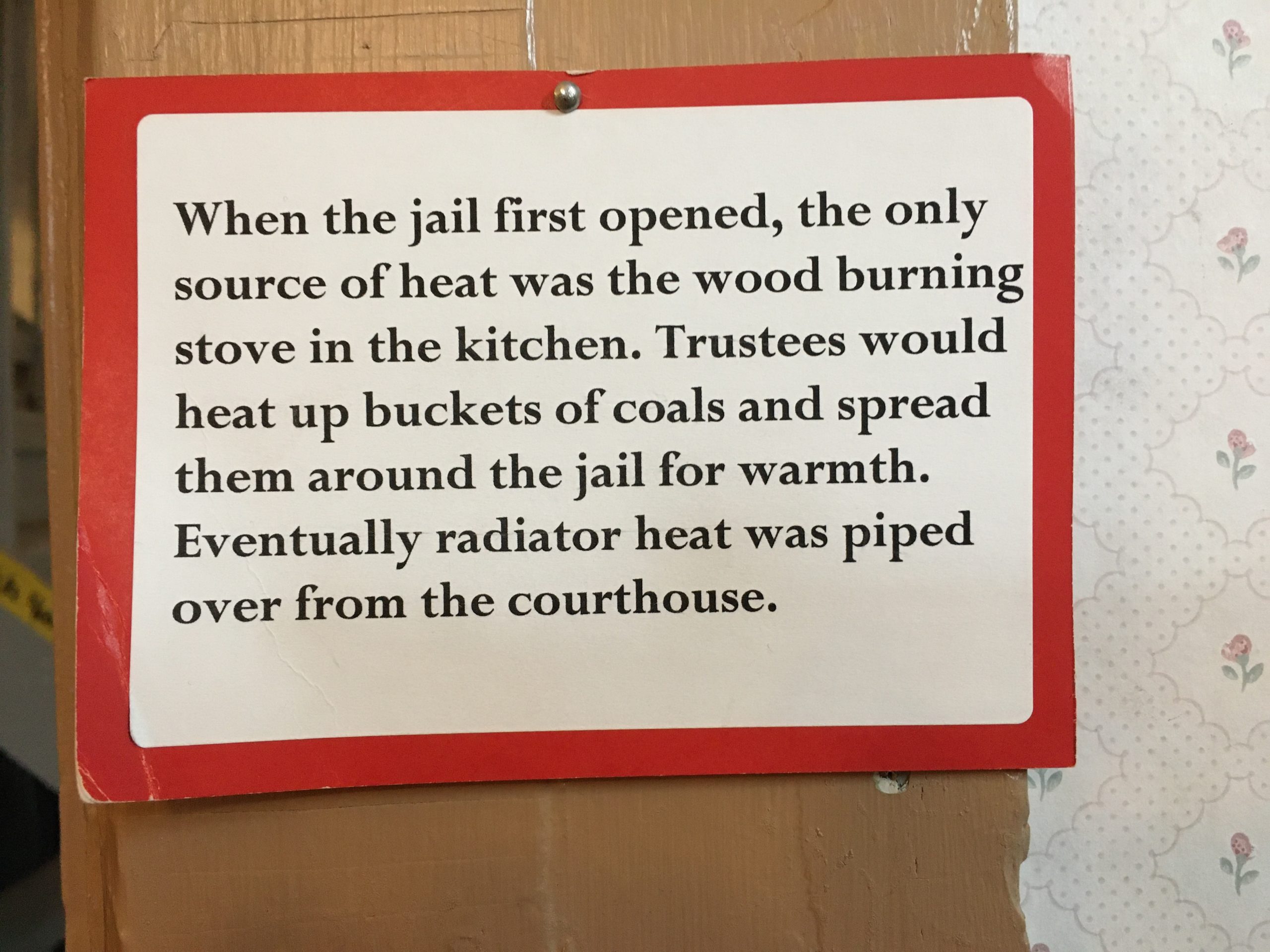
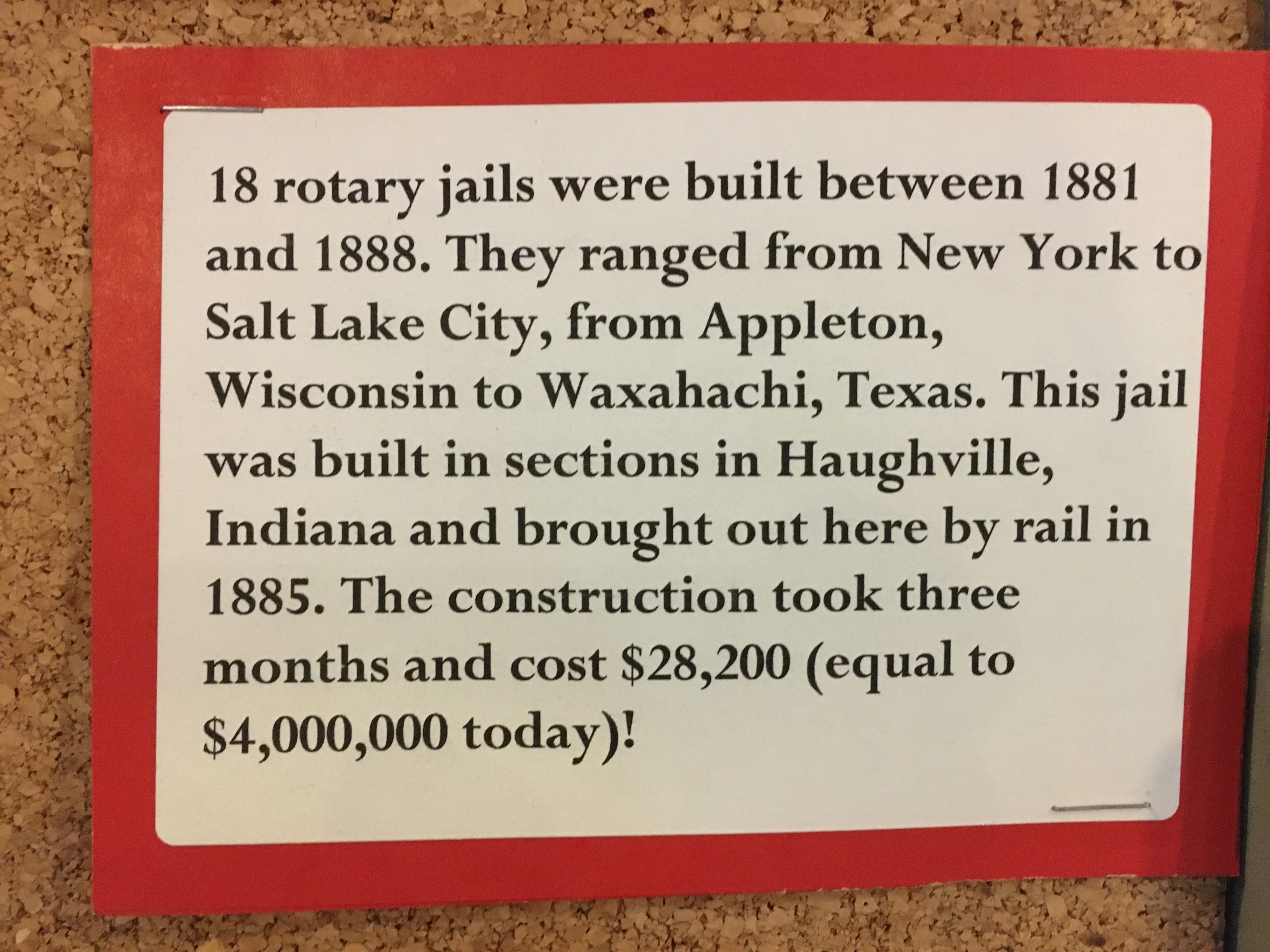

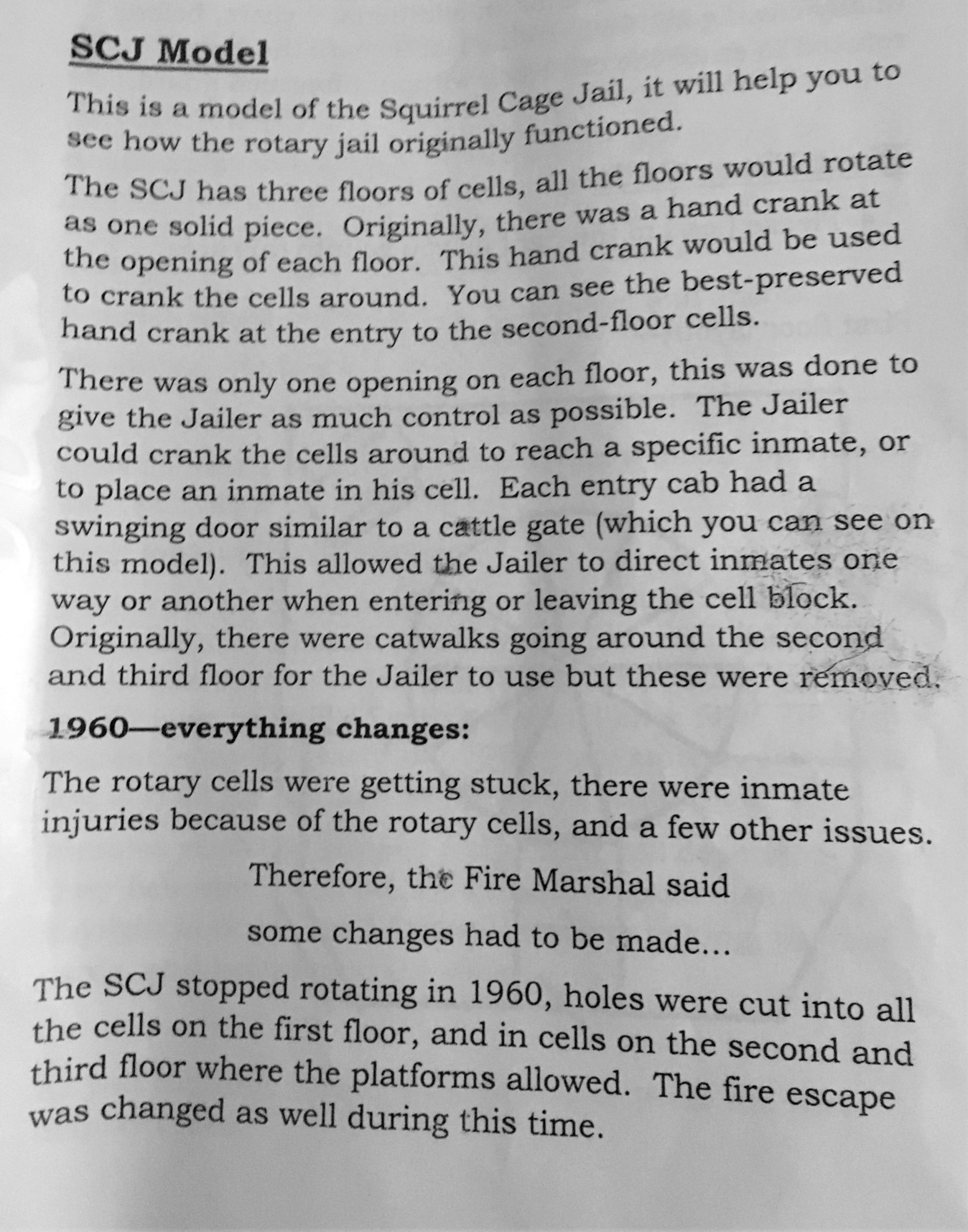

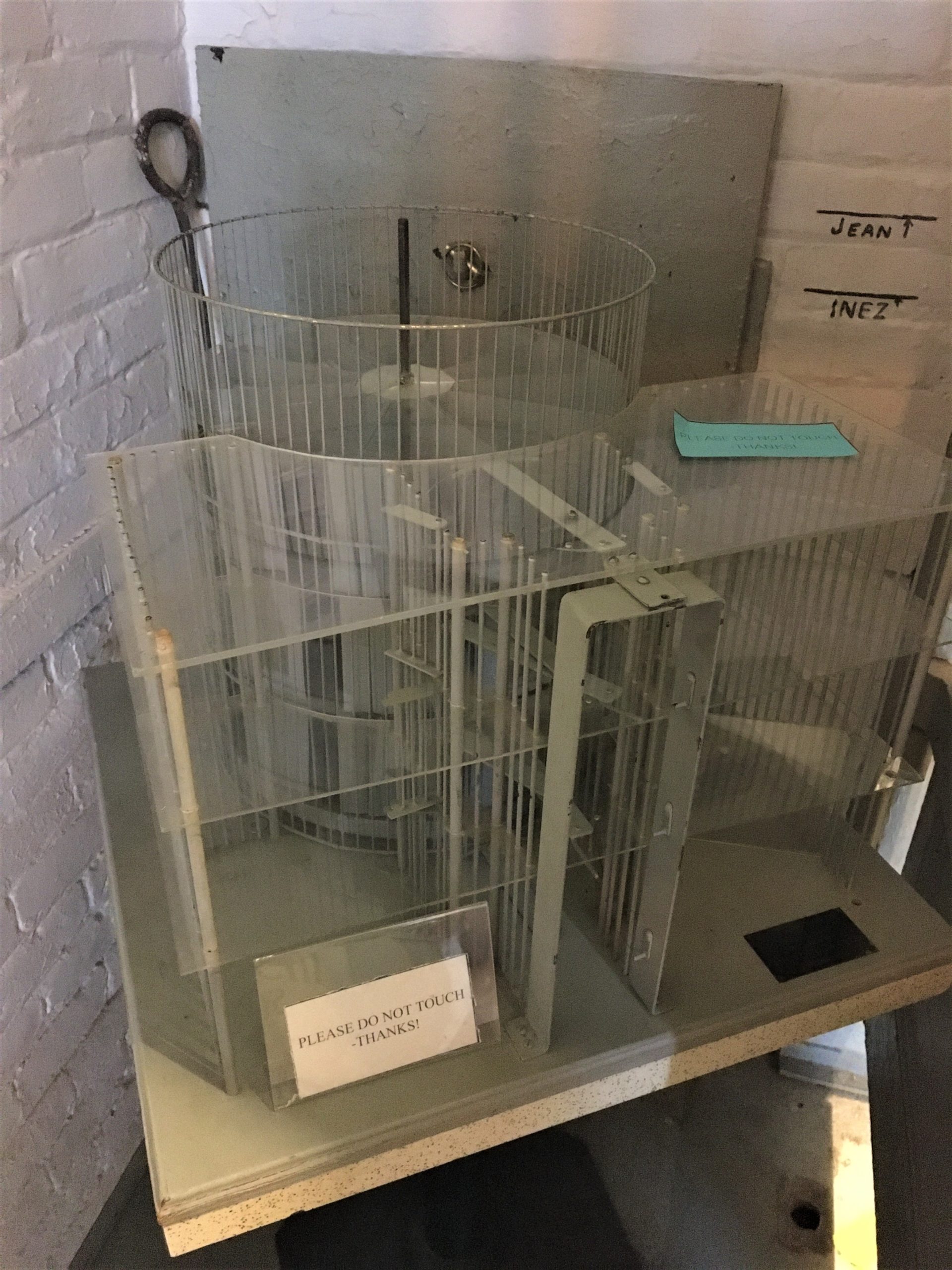

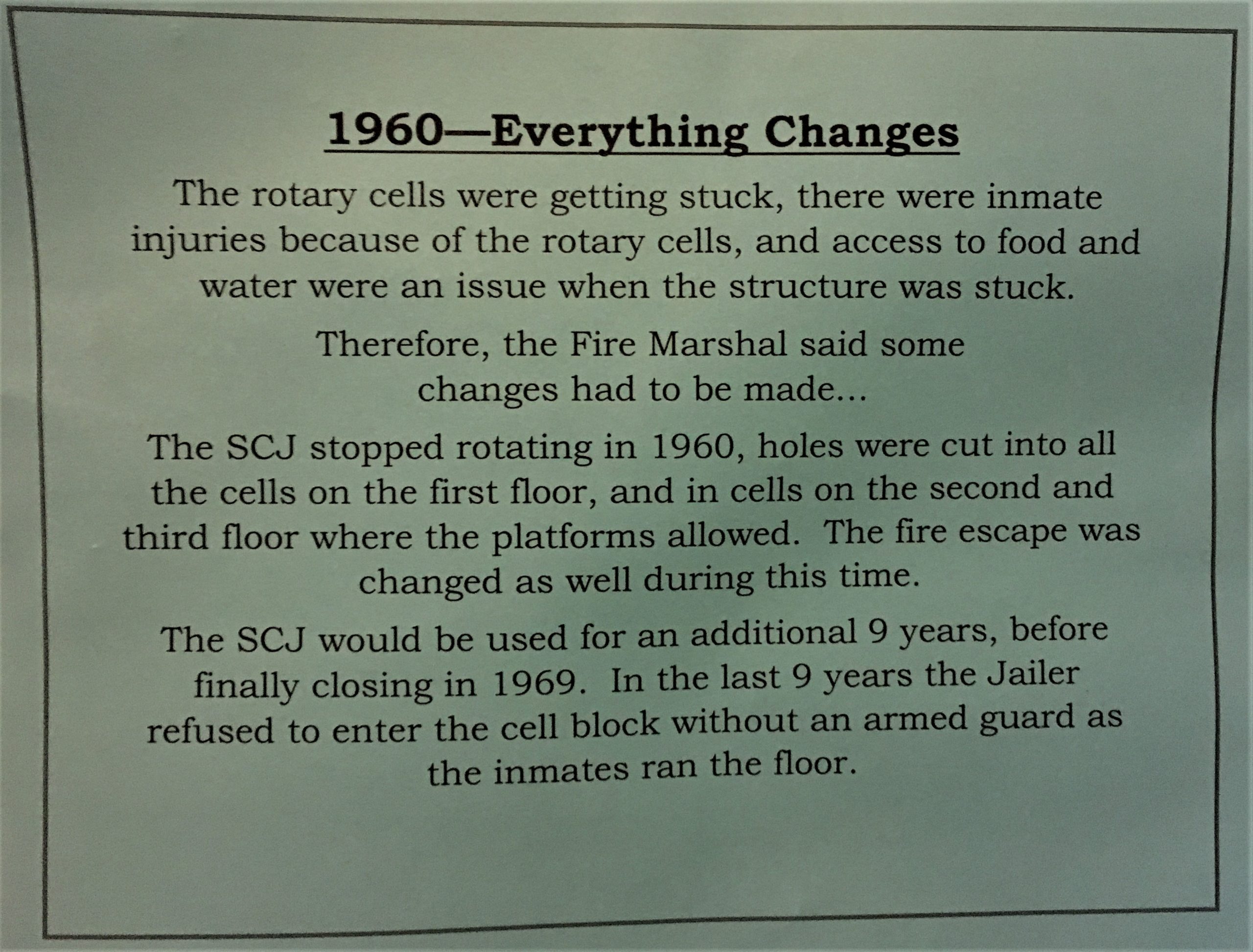
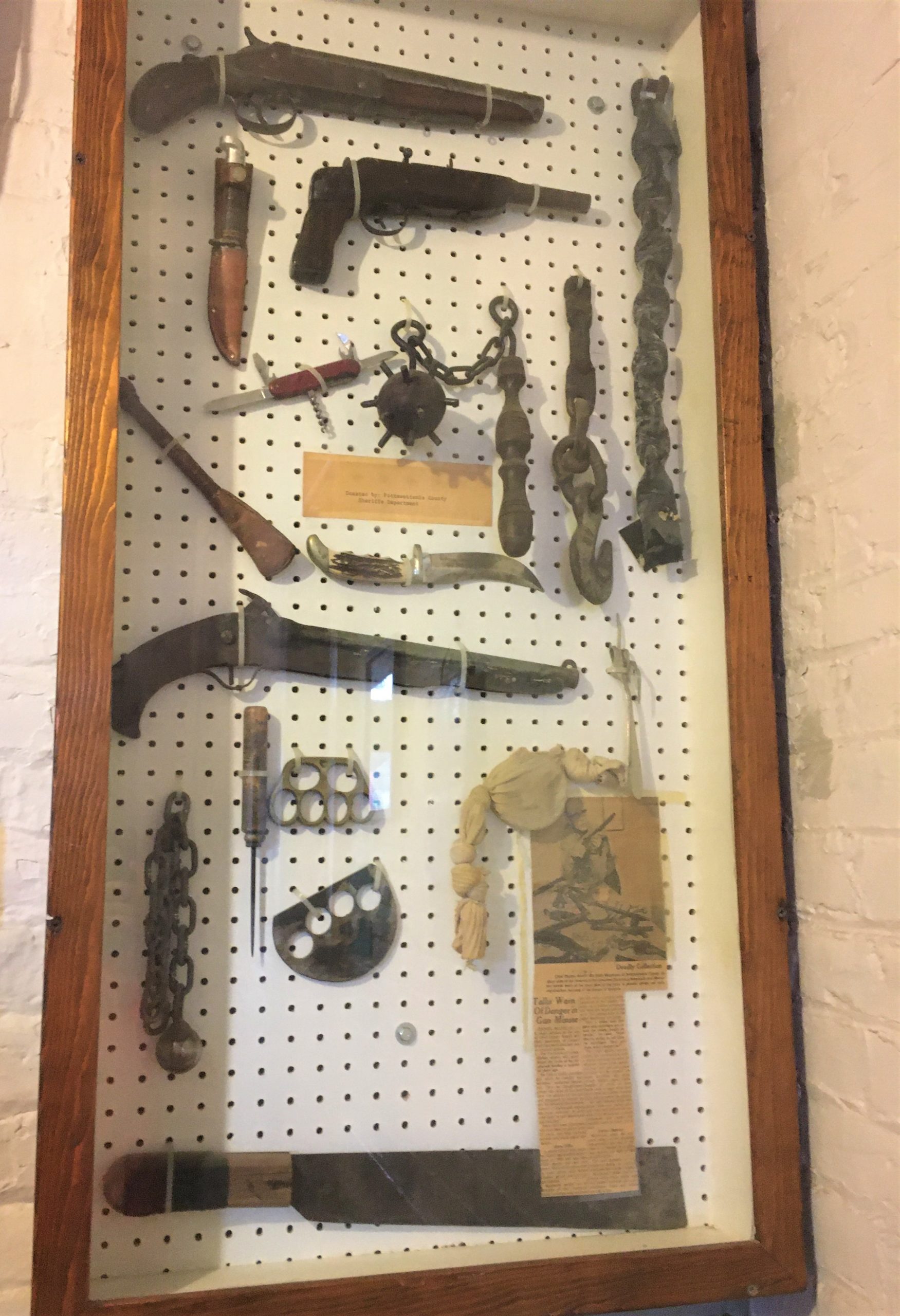

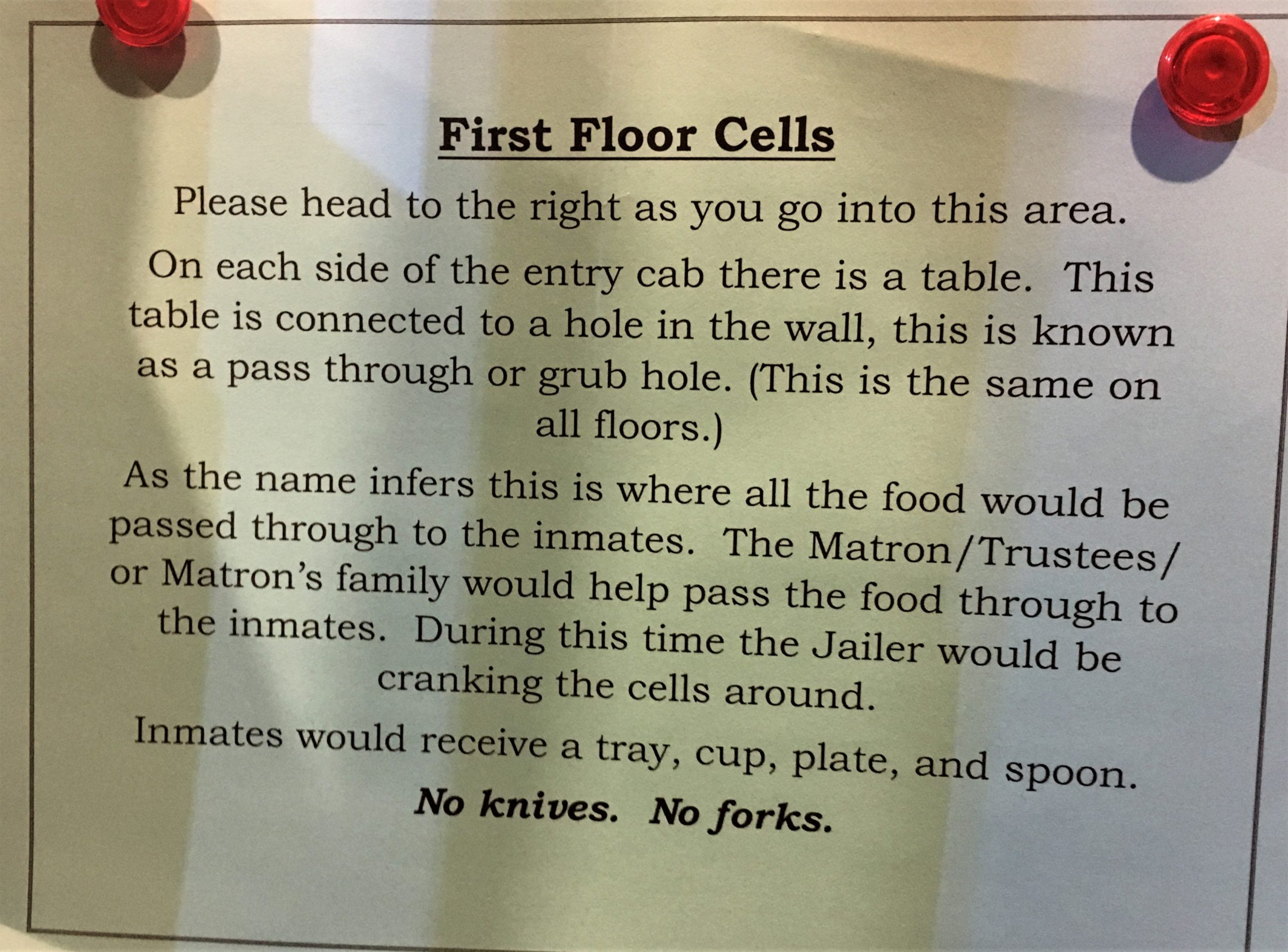
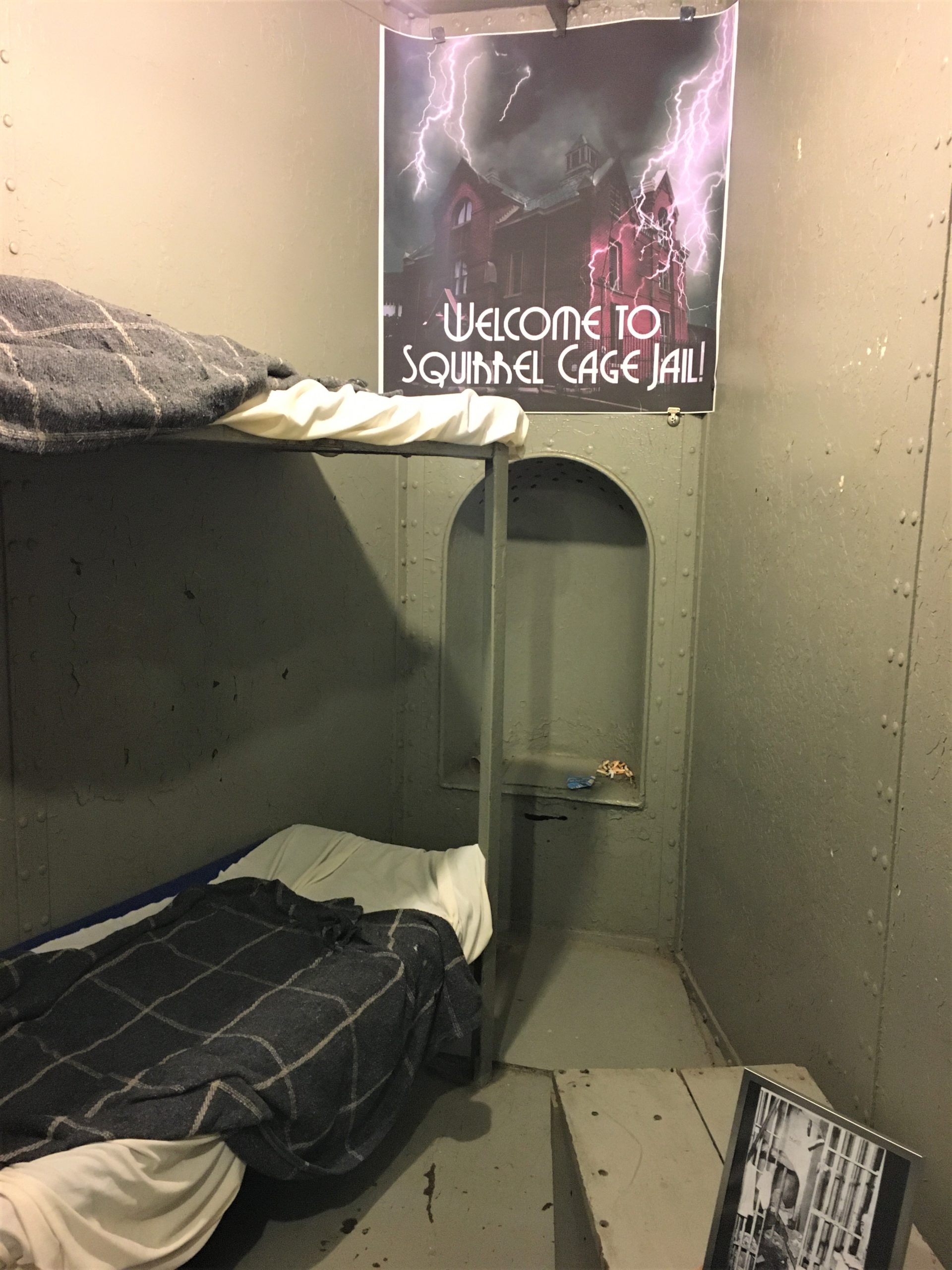
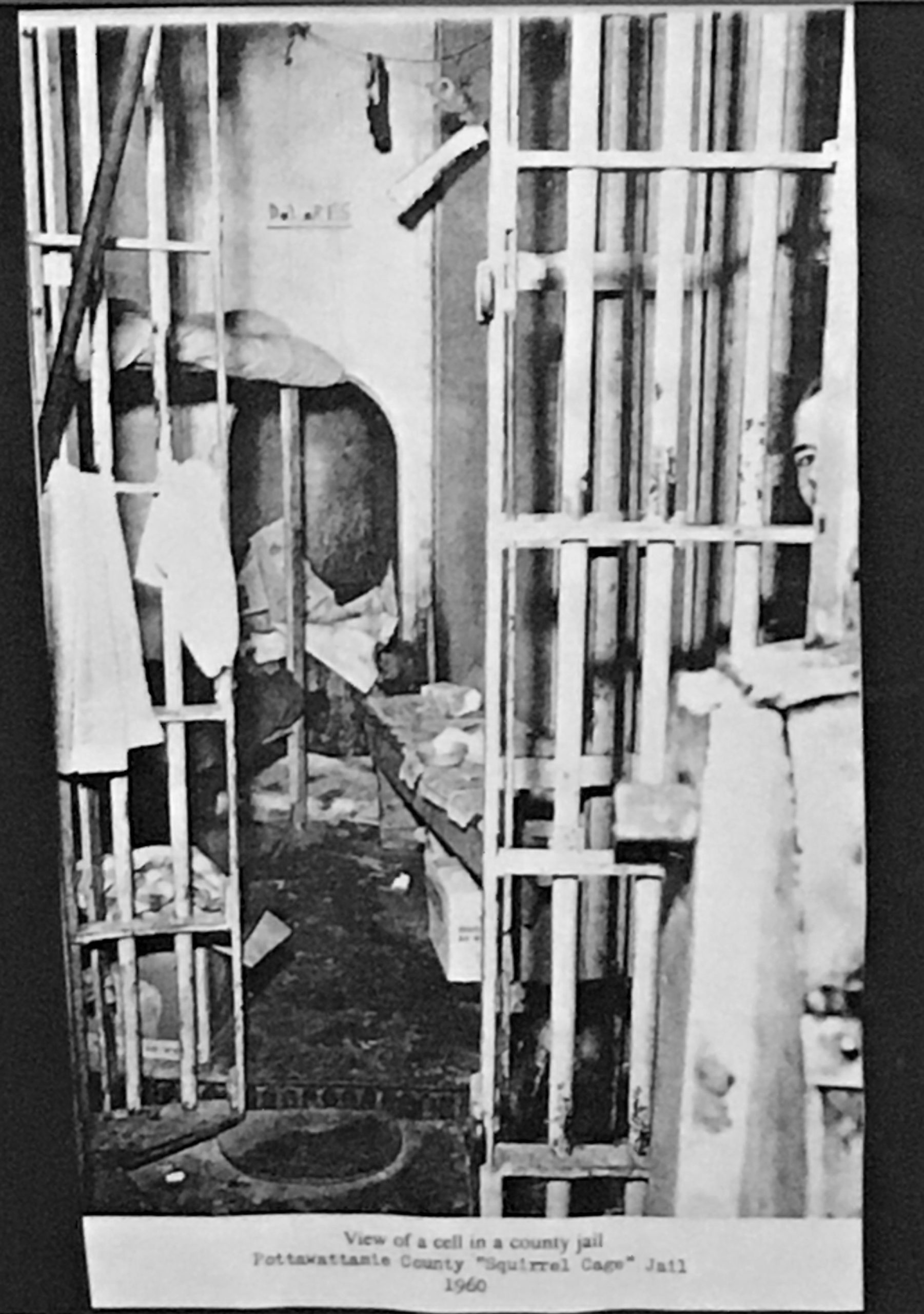



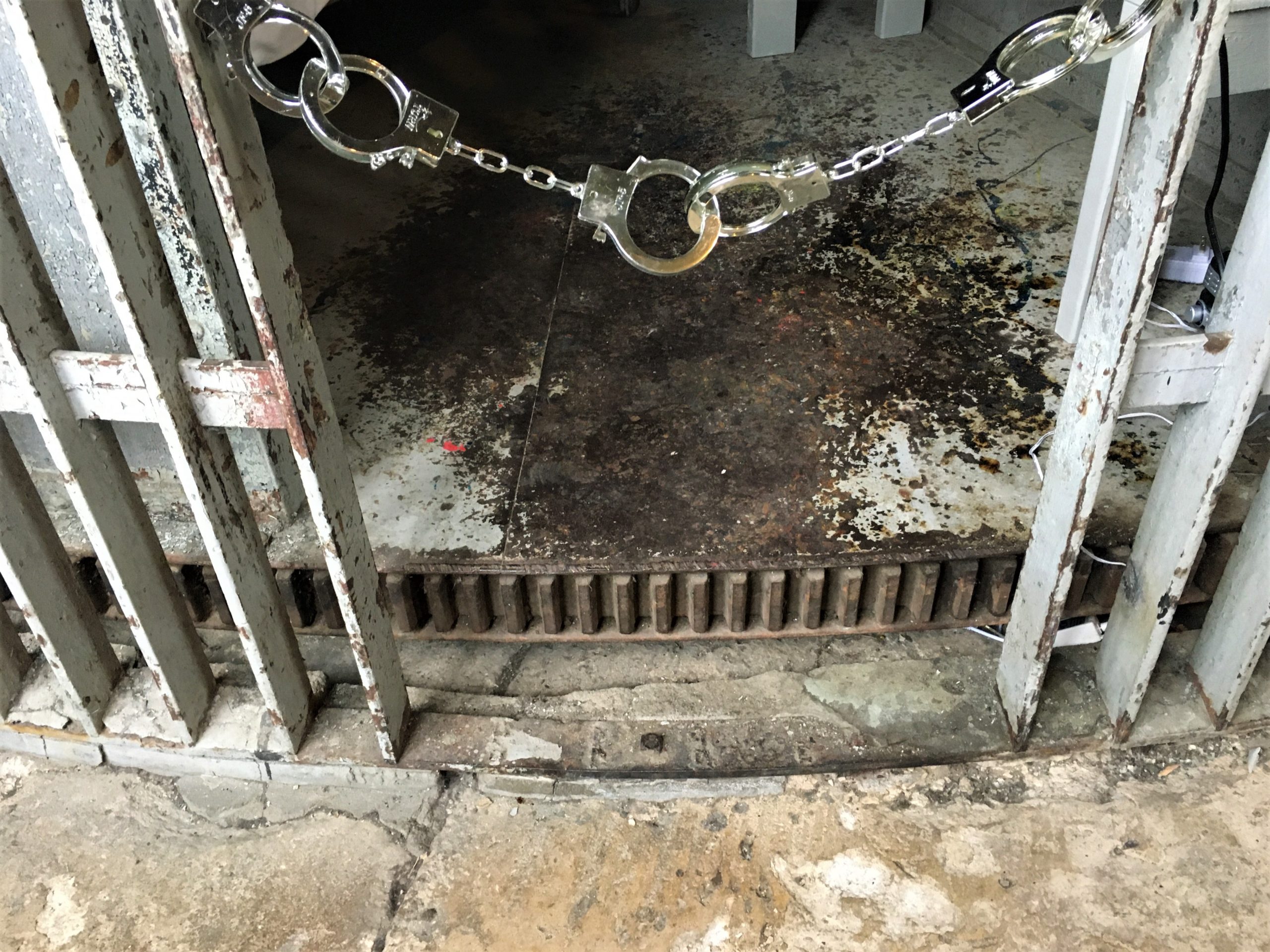
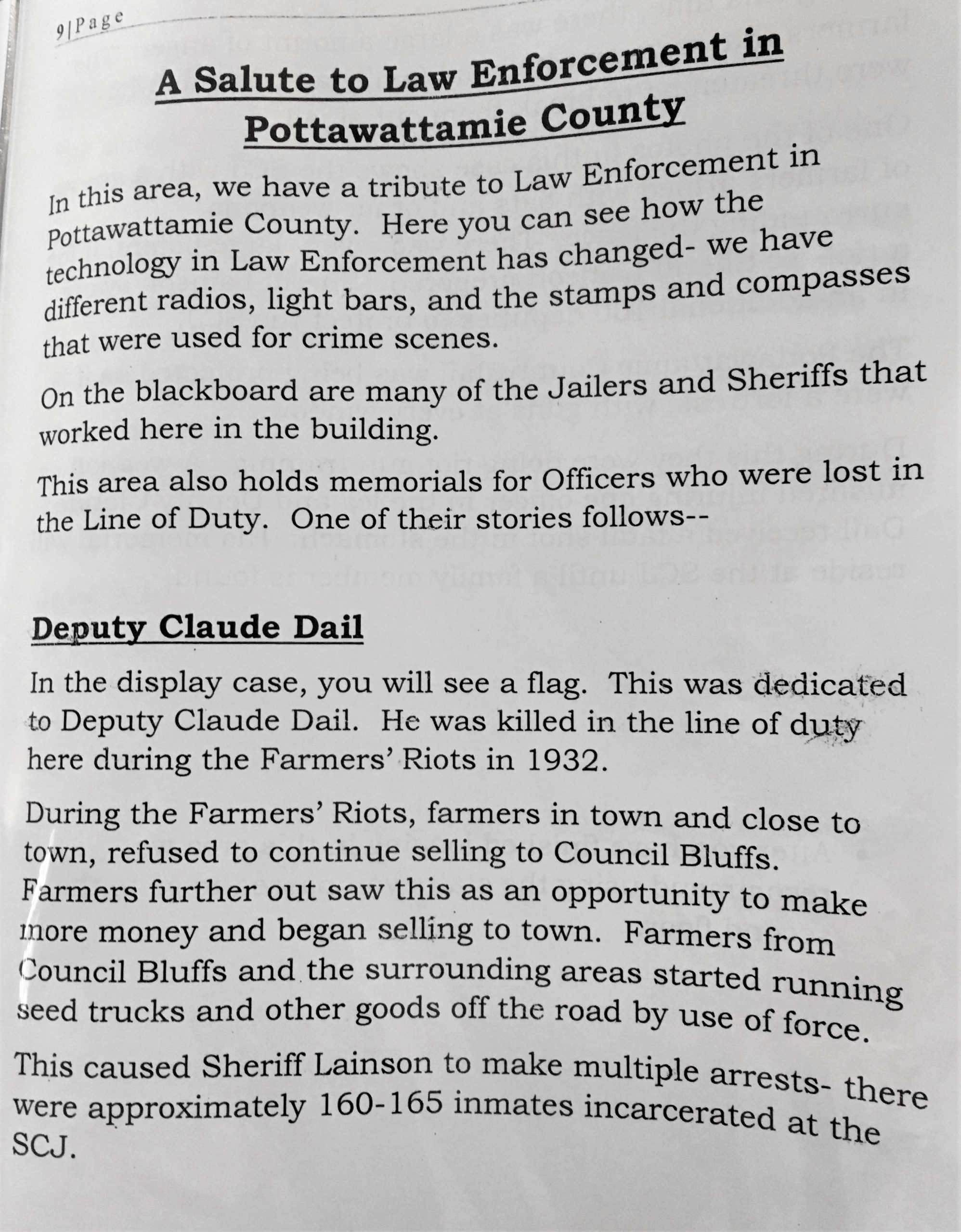
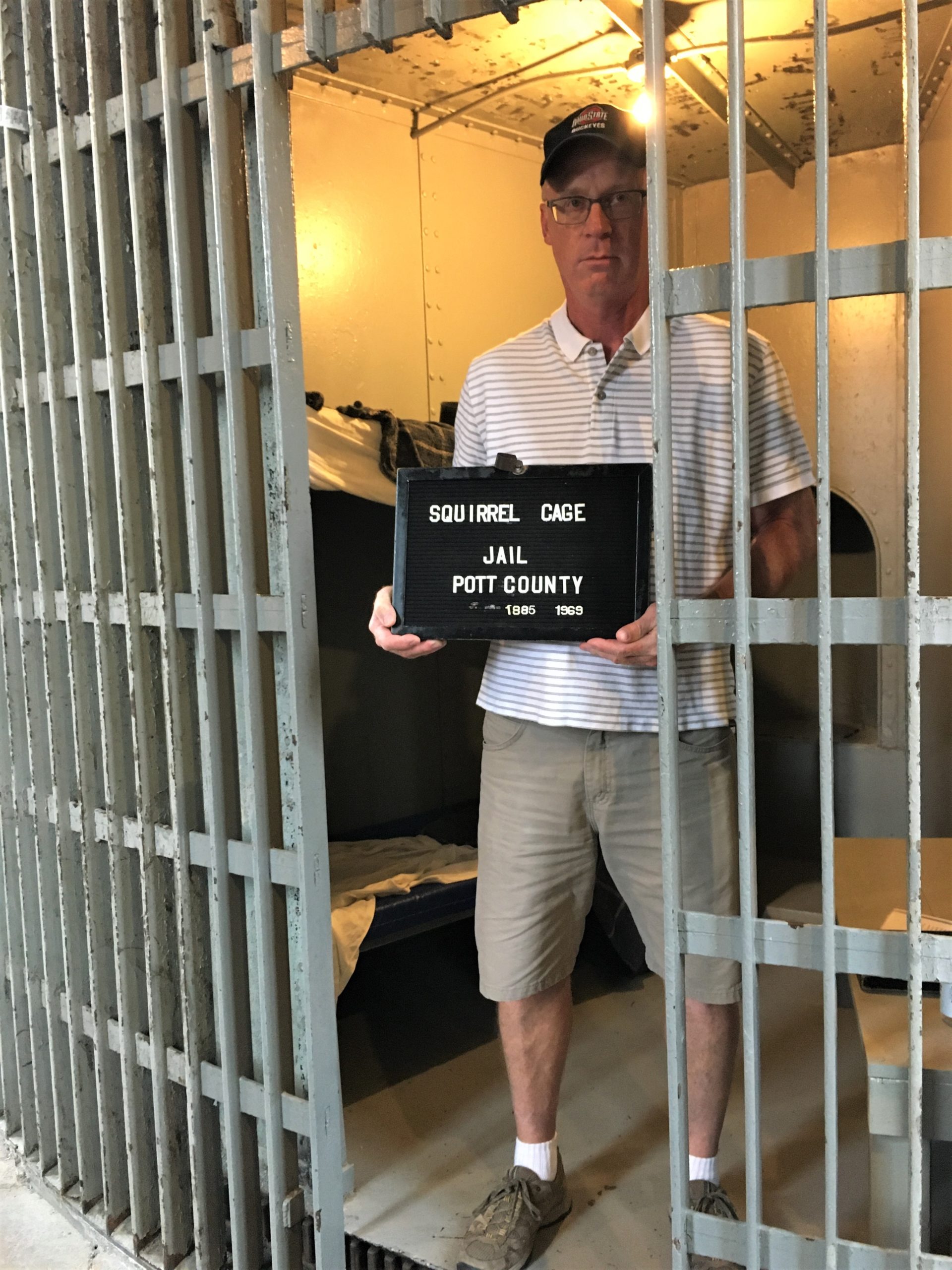



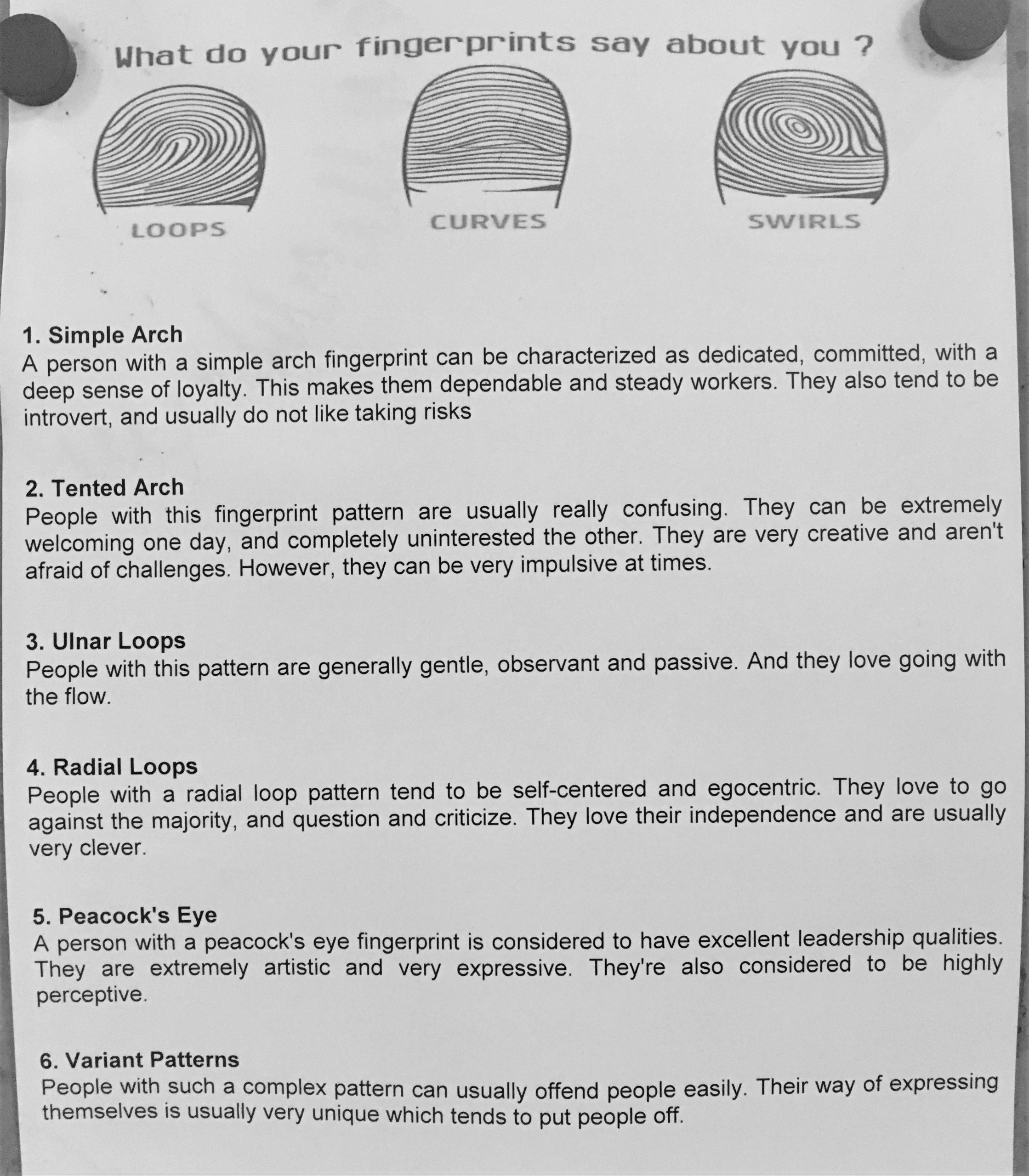
I’d have to see proof. : )



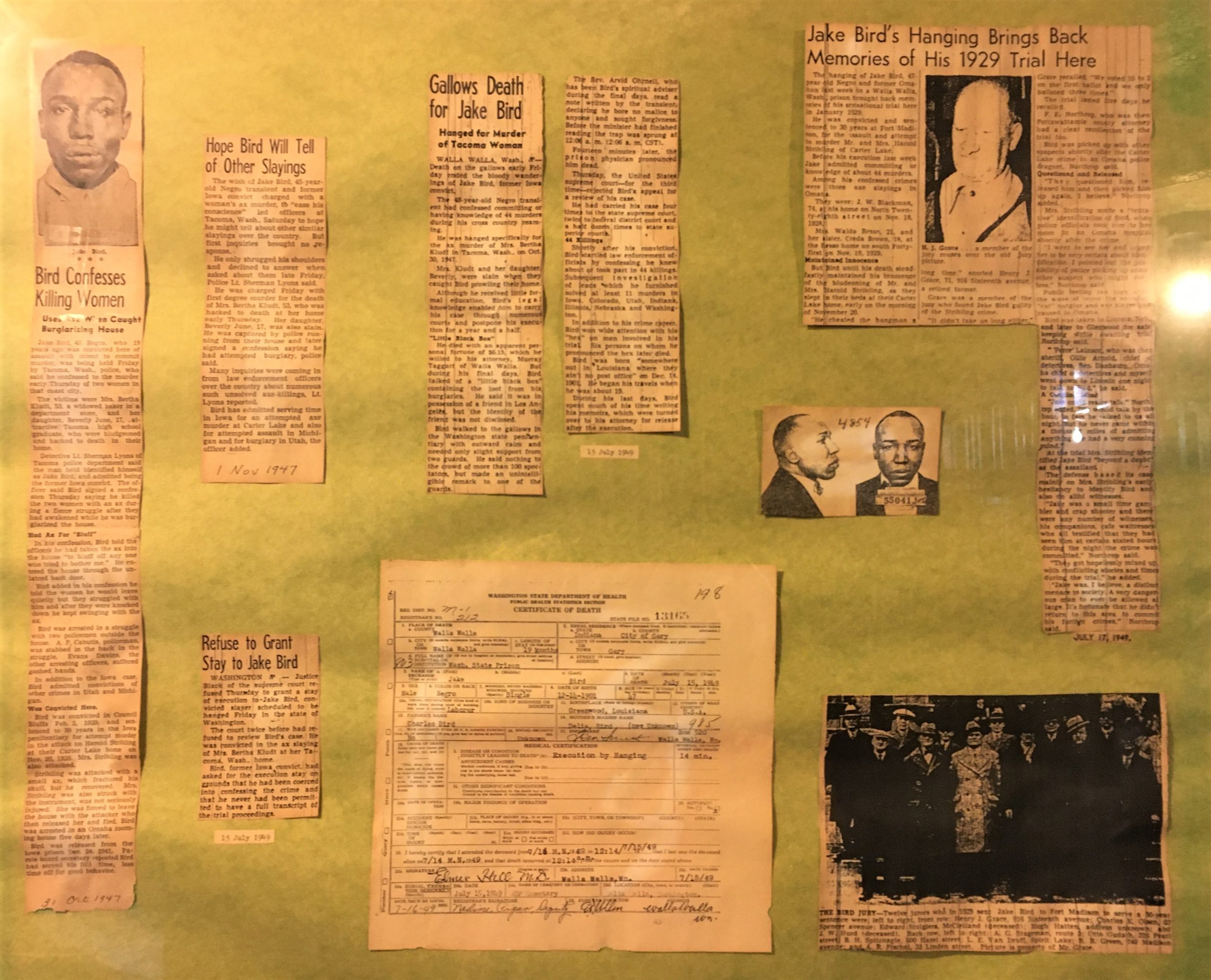
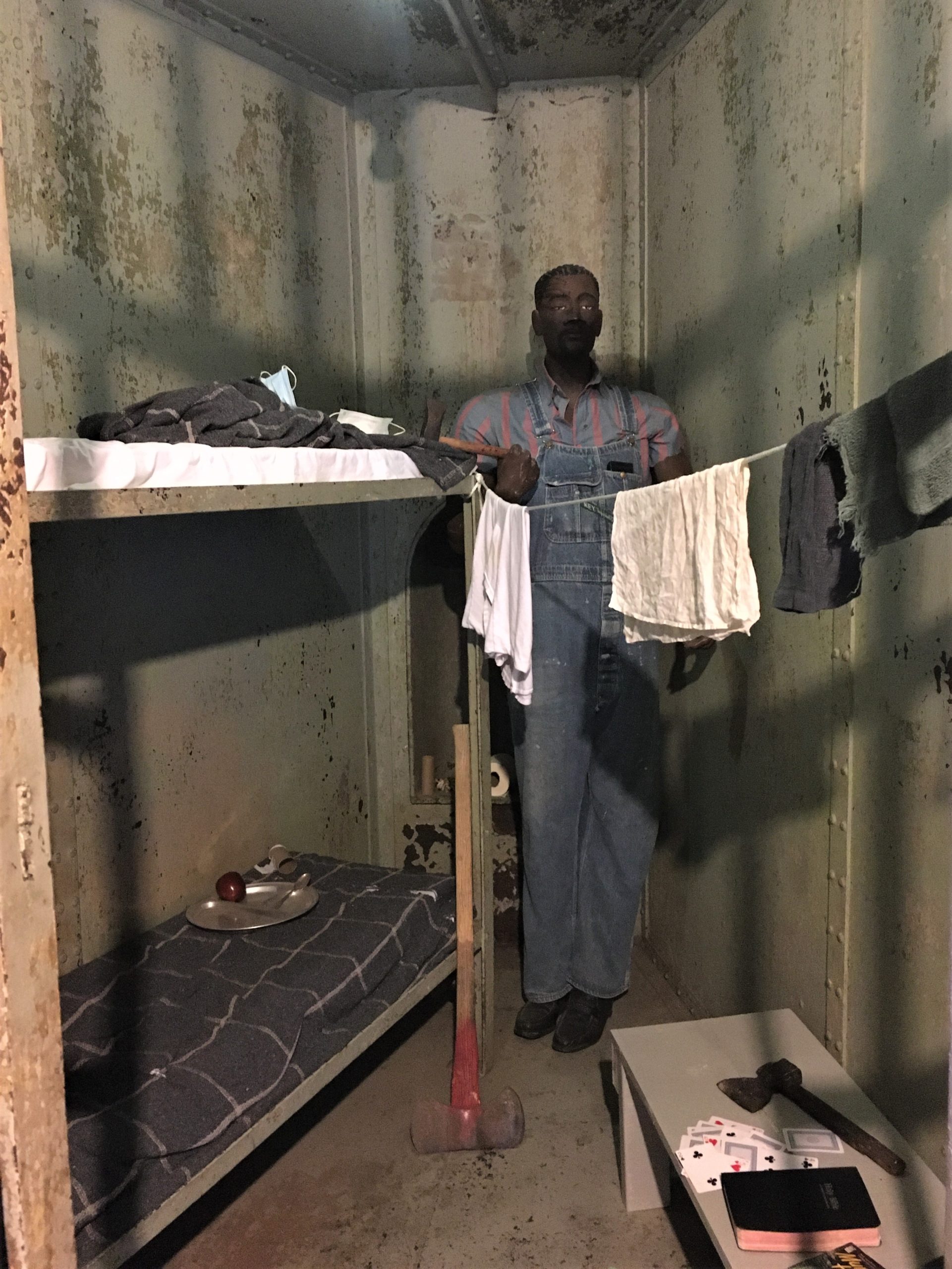
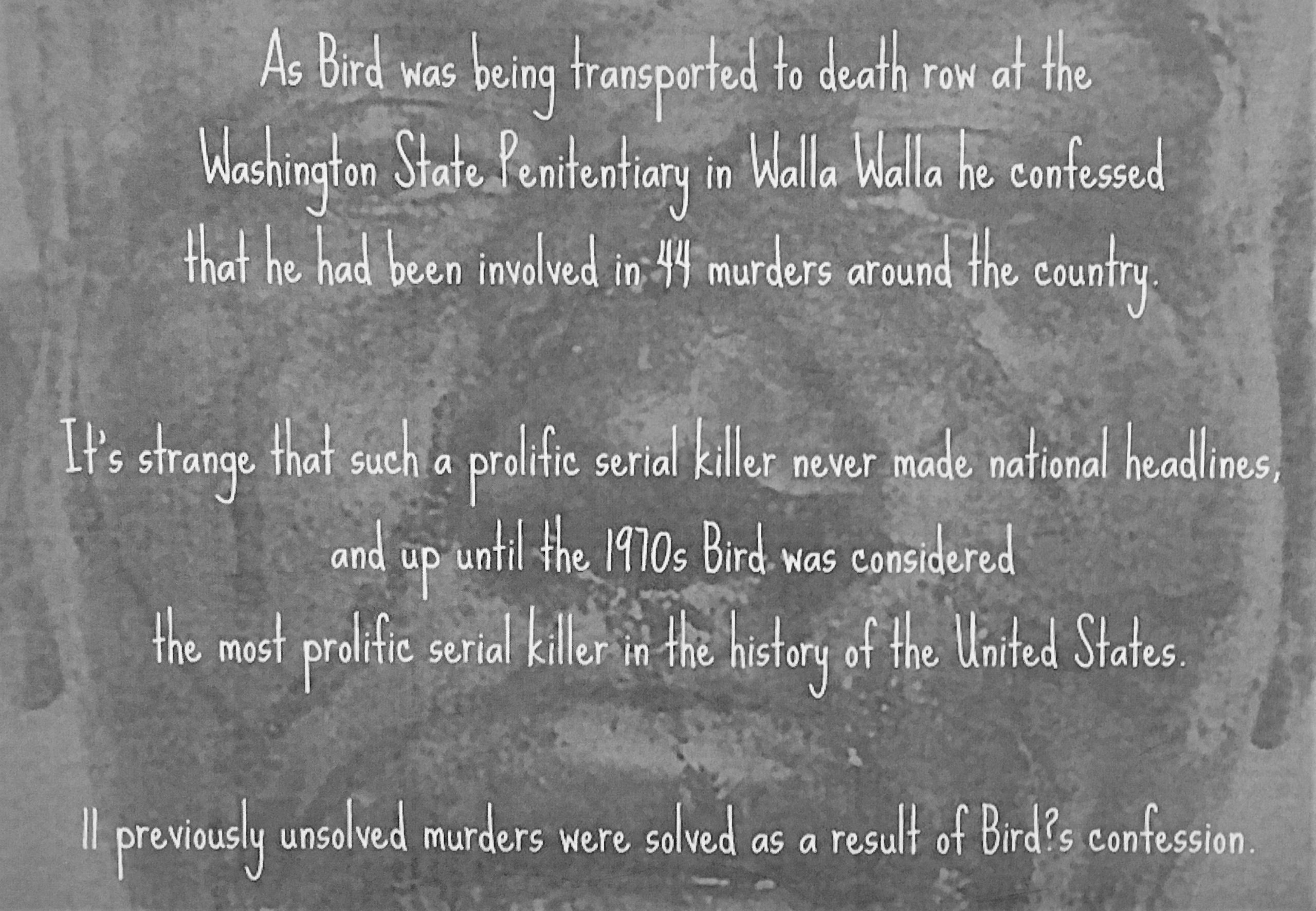




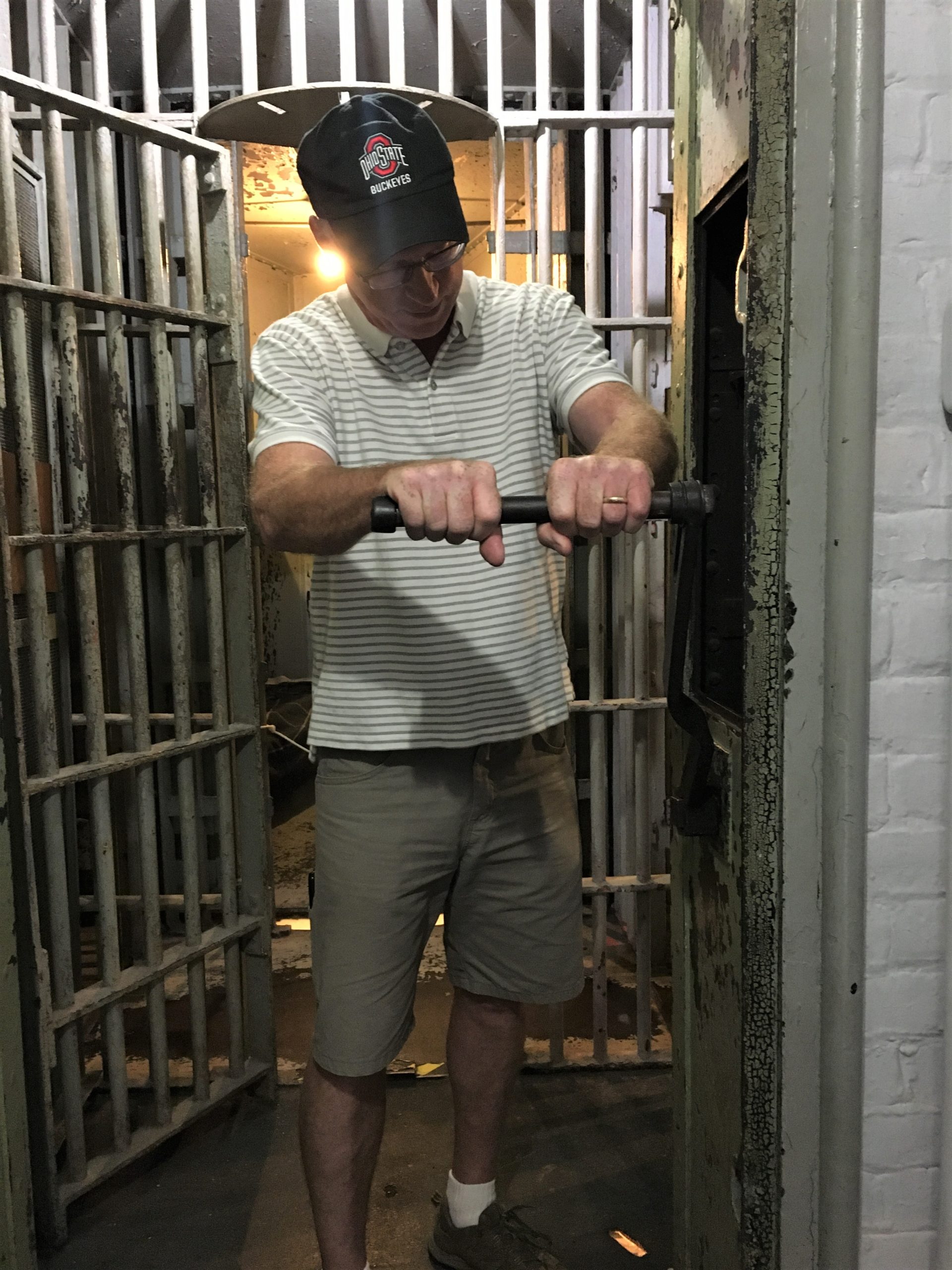
You were encouraged to attach the crank, but of course, nothing moves now.

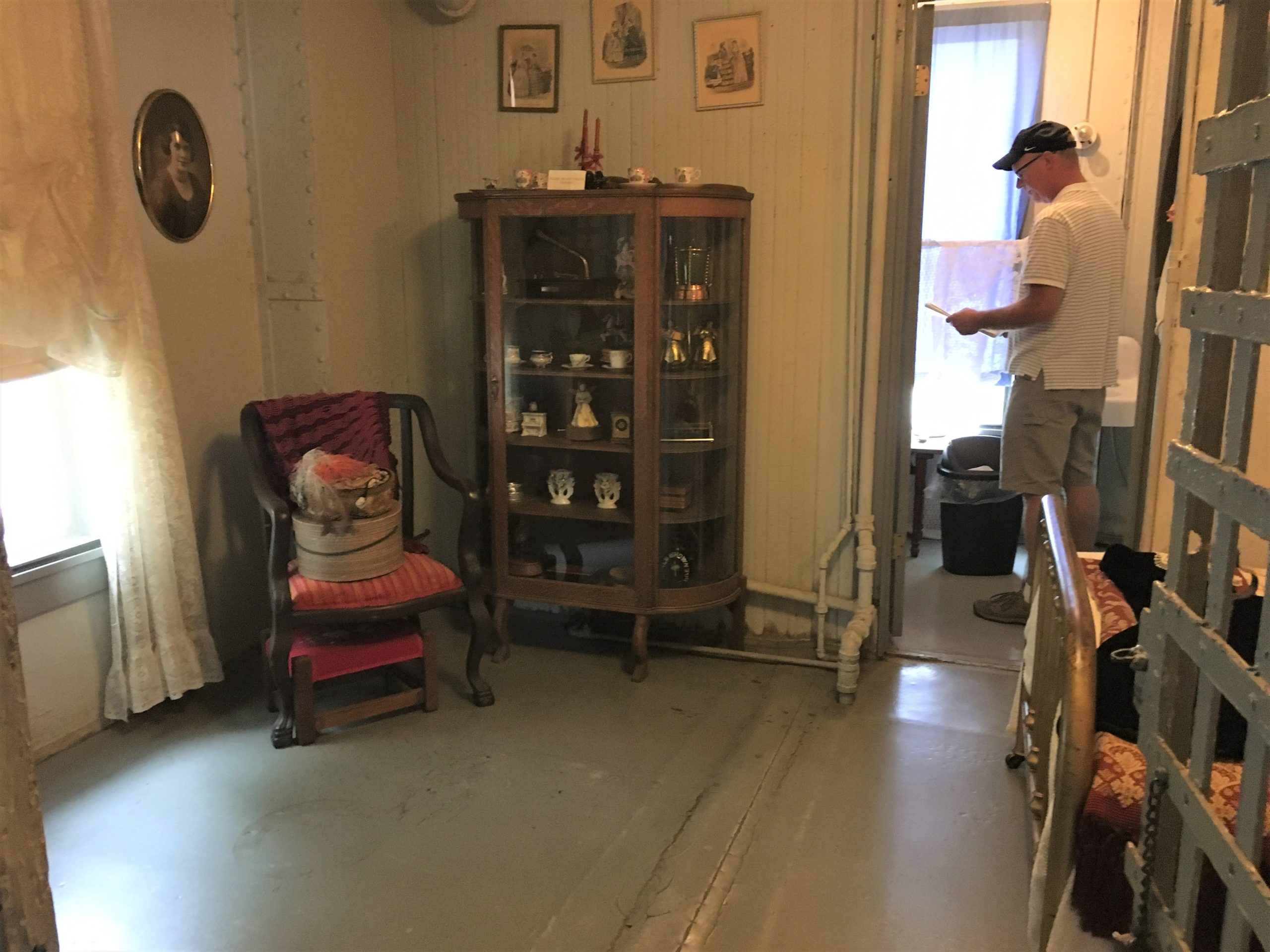



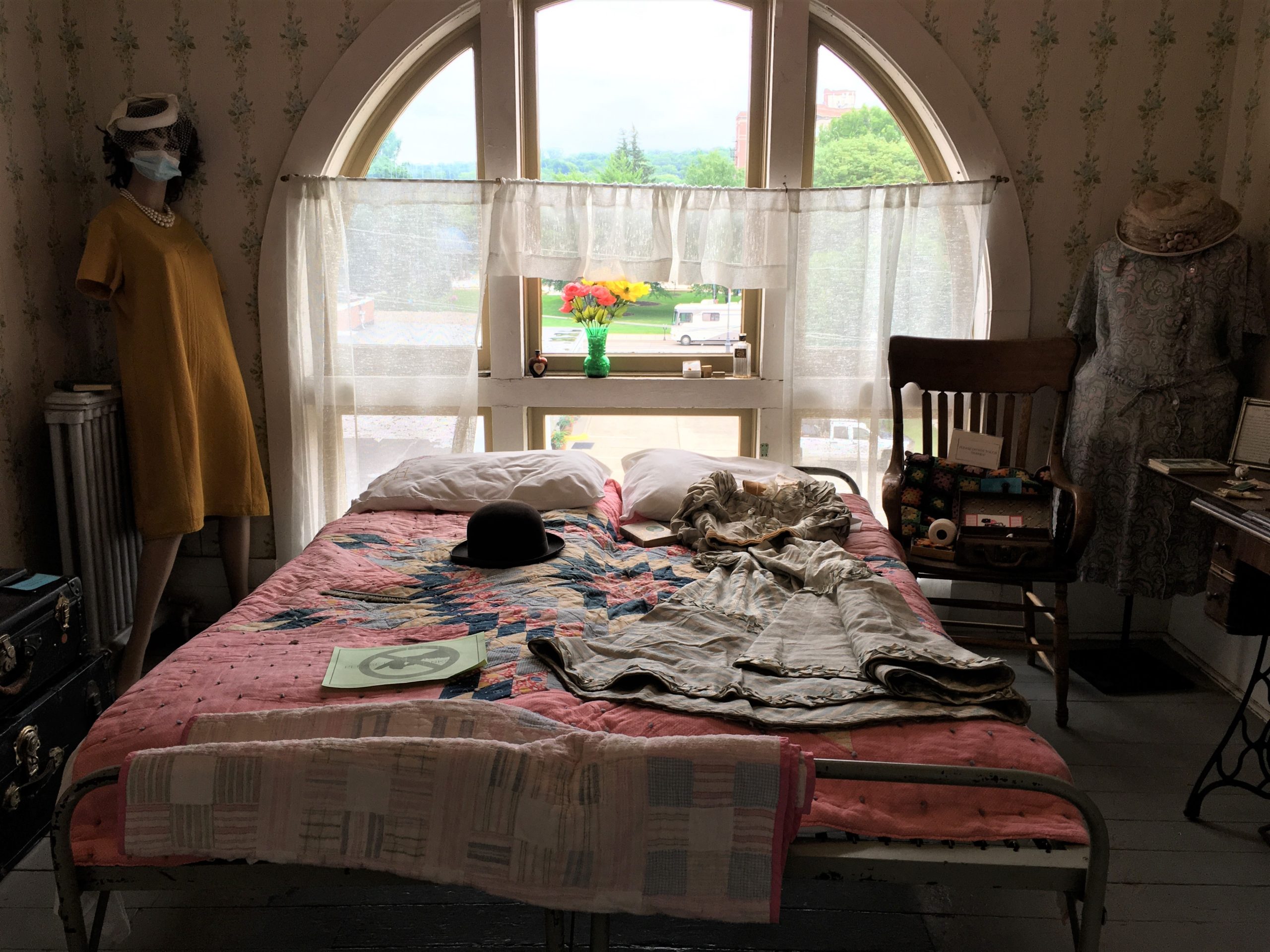

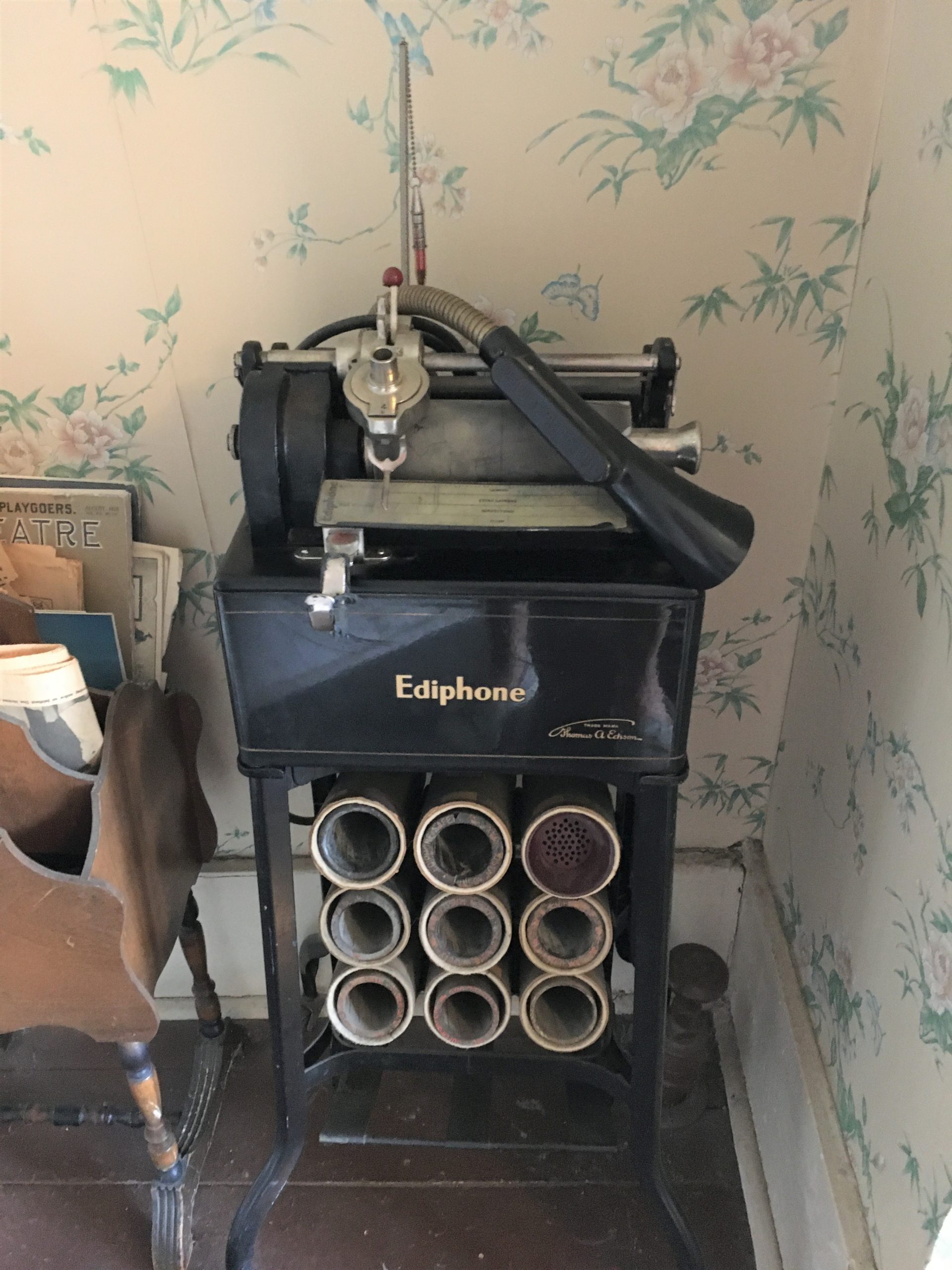



It explains where some of the wood in the jail came from.

I had to zoom in on the picture below. : )
I don’t have a picture of the laundry. It was an old wringer washer.
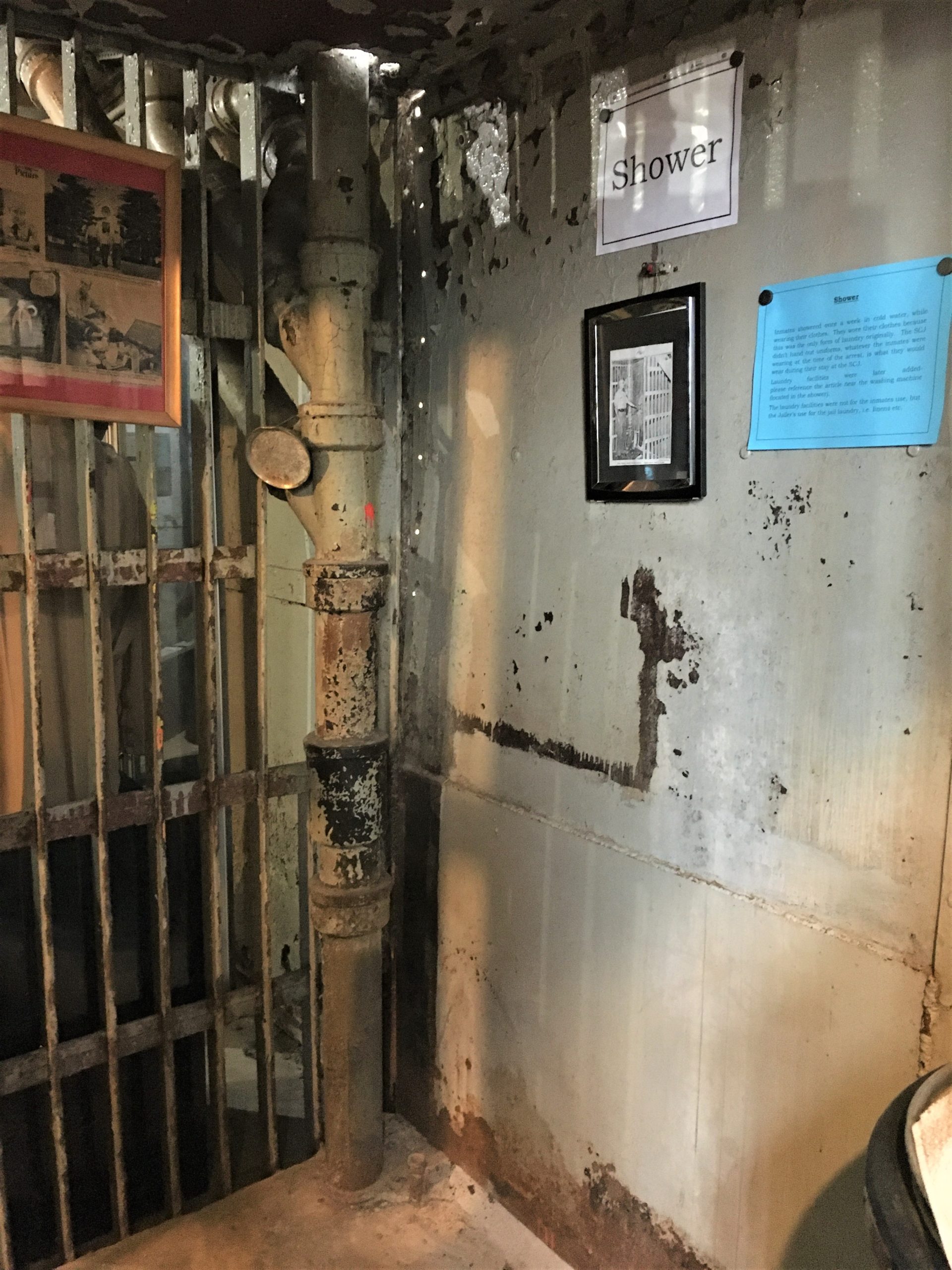
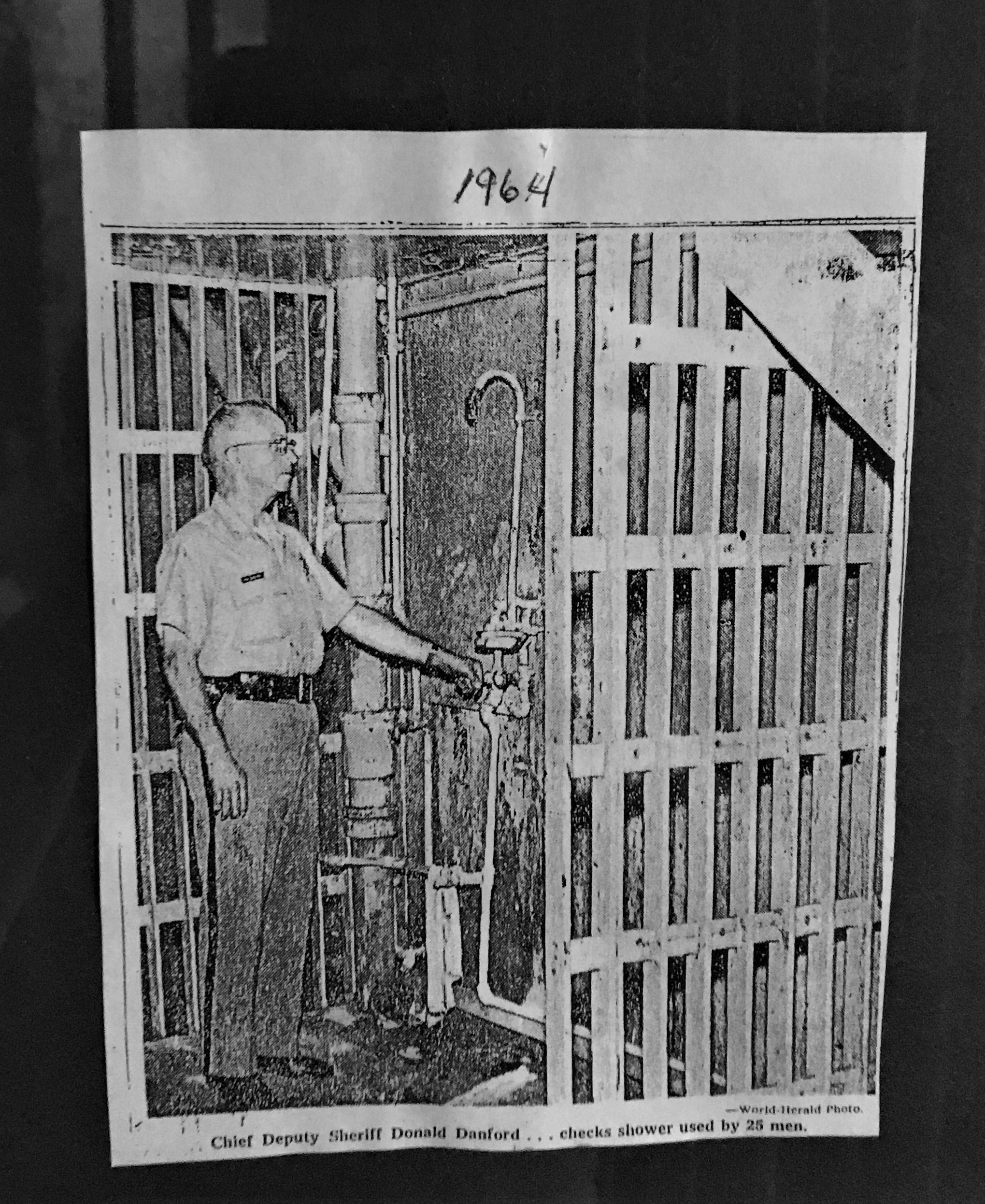

Blaine desired to use the facilities here, so I waited in the kitchen while he went upstairs.
As I waited, I started hearing a plinking sound, looked around,
and saw water bouncy up in this vase – kinda like the original Jurassic Park (remember?)
A moment later, Blaine showed up, saw what I was looking at and announced that we should leave the room. Seems the pipes from the second floor toilet leak. Well, that would explain the color . . . .
Ickky!!!
By the time we were done sightseeing, it was time for dinner – back across the border in Omaha. What’s on tonight’s menu? The original Reuben Sandwich! There’s a bar that acquired the original recipe from the Blackstone Hotel where it was first created. Here’s an article I found on eatthisnotthat.com:
A good Reuben sandwich is a messy, mile-high affair made up of salty corned beef, tangy sauerkraut, melted Swiss cheese, and a glug of Russian dressing pressed between two slices of rye bread. Arguably one of the great culinary inventions of the twentieth century, it’s an unlikely combination that’s been a big hit for nearly 100 years. But who is the mysterious mastermind Reuben, well, behind the beloved Reuben sandwich’s origin story anyway? Naturally, the answer is far from simple, as there is more than one person credited to bringing this sandwich to the masses.
New York Deli vs. Omaha Hotel
As a modern staple of New York Jewish delis, it seems natural that this is where the Reuben sandwich originated. Many claim that Arnold Reuben, proprietor of Reuben’s Restaurant and Deli on E. 58th Street, invented it in 1914. As his daughter tells the story, an actress named Annette Seelos (known for her starring roles in Charlie Chaplin films) came into the restaurant late one night and was just famished. She asked Reuben to make her a huge sandwich, so he took ham, turkey, Swiss, coleslaw, and Russian dressing and served it on rye bread. It was a hit, and he called it the Reuben Special.
Observant readers will note, however, that there are some key differences between that sandwich and the Reuben that we know and love today.
Which then brings us to Omaha, Nebraska, where others swear the Reuben sandwich was first concocted in the 1920s. It was there that Bernard Schimmel ran the kitchen at the Blackstone Hotel, which his father owned and where he would also enjoy a weekly poker game with friends. As this legend goes, one of the players—local grocery store owner Reuben Kulafofsky—requested a sandwich with corned beef and sauerkraut. Schimmel, who was a European-trained chef, put his own spin on it by draining the sauerkraut, mixing it with Thousand Island dressing, then layering it with Swiss and homemade corned beef on dark rye bread. His crowning addition, though, was to grill it.
The earliest reference to a Reuben sandwich on a restaurant menu appears to be from the Blackstone’s main dining room in 1934, when the sandwich cost just 40 cents. This appears to settle the debate, at least to a certain extent.
A winning recipe
One thing is for sure: the Reuben sandwich gained national acclaim after winning the National Sandwich Idea Contest (yes, that was really a thing) in 1956 after it was entered by a chef at one of the other hotels owned by Schimmel’s father. He’d added it to all the menus by then. The judges called it a “hearty man-sized sandwich” and declared it “the nation’s top hotel and restaurant sandwich” out of 600 or so entries. From there, its popularity took off, and today, it’s now available coast to coast—and certainly in Omaha, NE.
Katherine Martinelli is a recipe developer and award-winning journalist who spends her days dreaming and writing about food
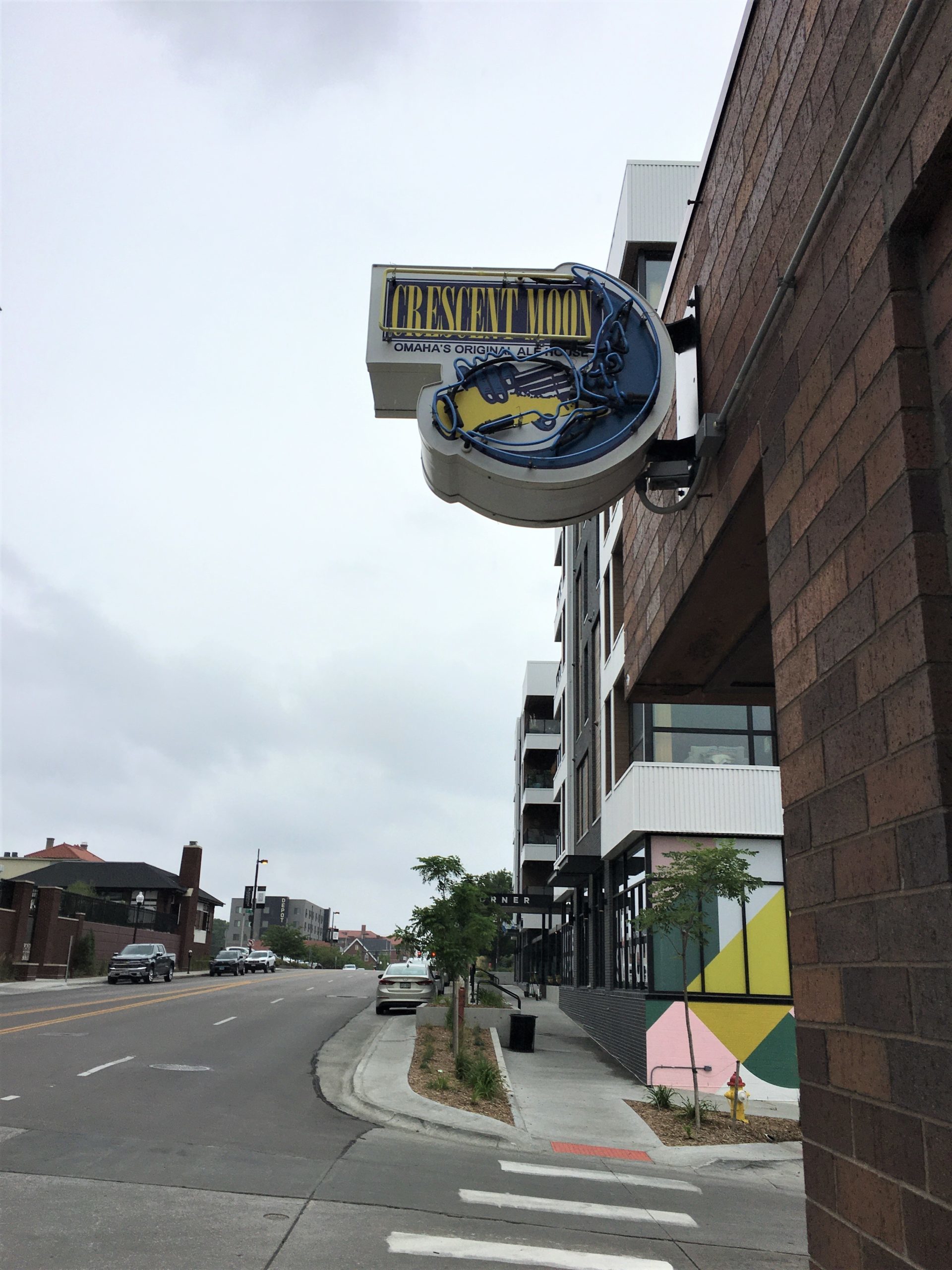


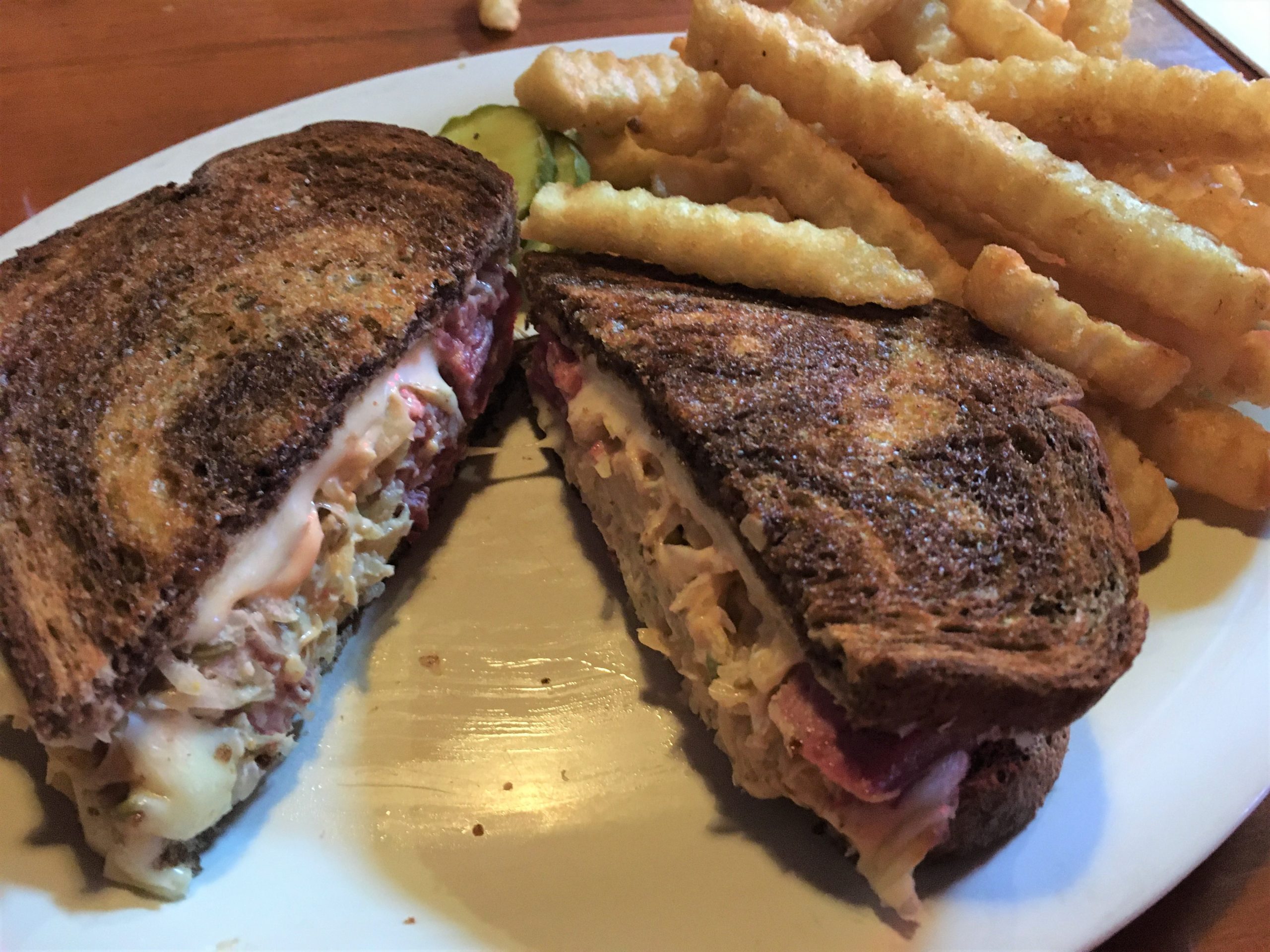
Still, it’s the original, so you can’t find fault in it. : )
And I learned something new for when I make Reubens again – – mix the dressing with the kraut!

It sits across the street from the bar we were in.
We walked the street back to our Jeep, then drove over to see about walking the pedestrian bridge here in town. I had to don a jacket because it was breezy and cool. Even Blaine threw on a long-sleeved T over his shirt.



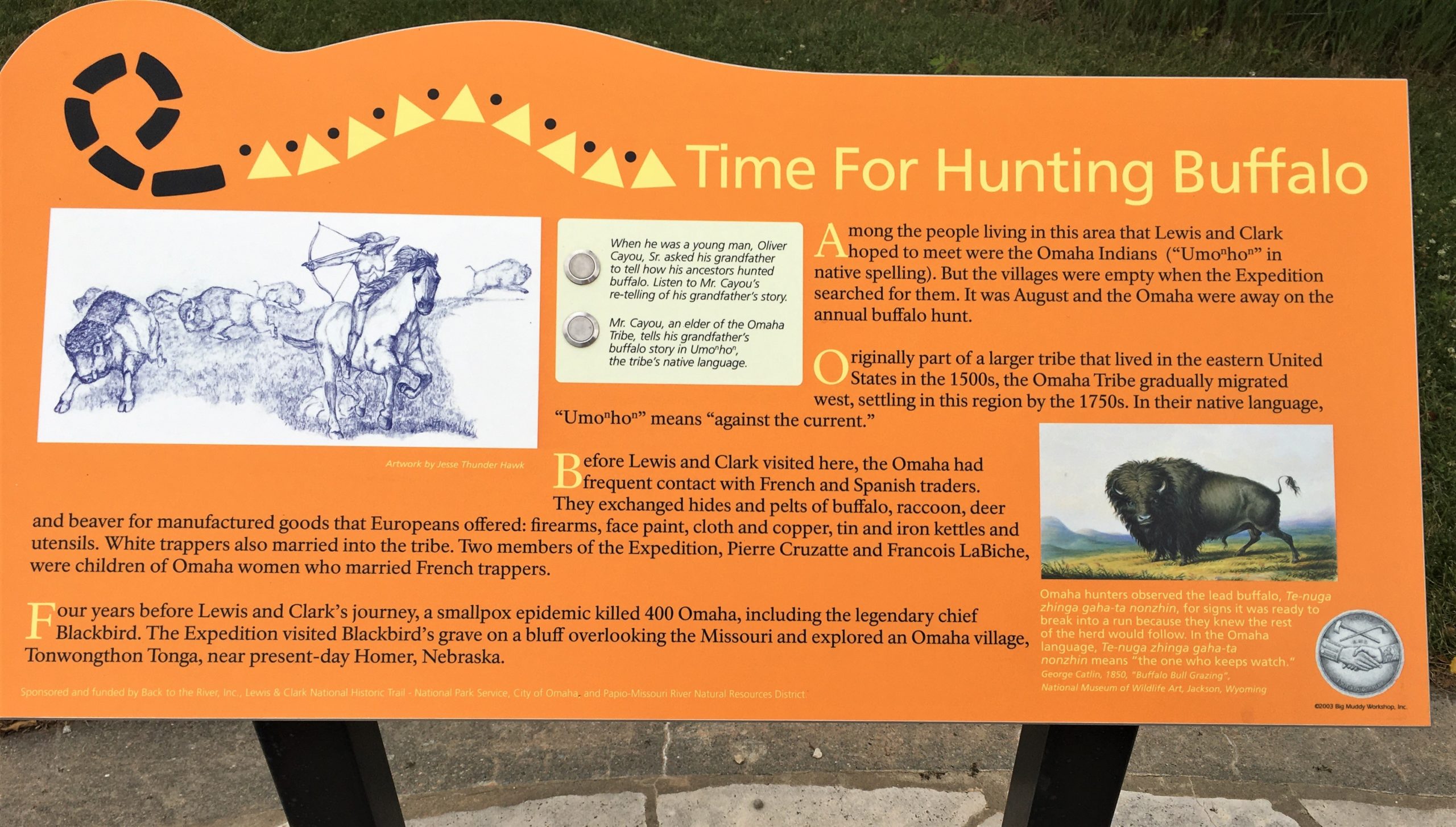

We’re kinda close by the time this picture was taken.

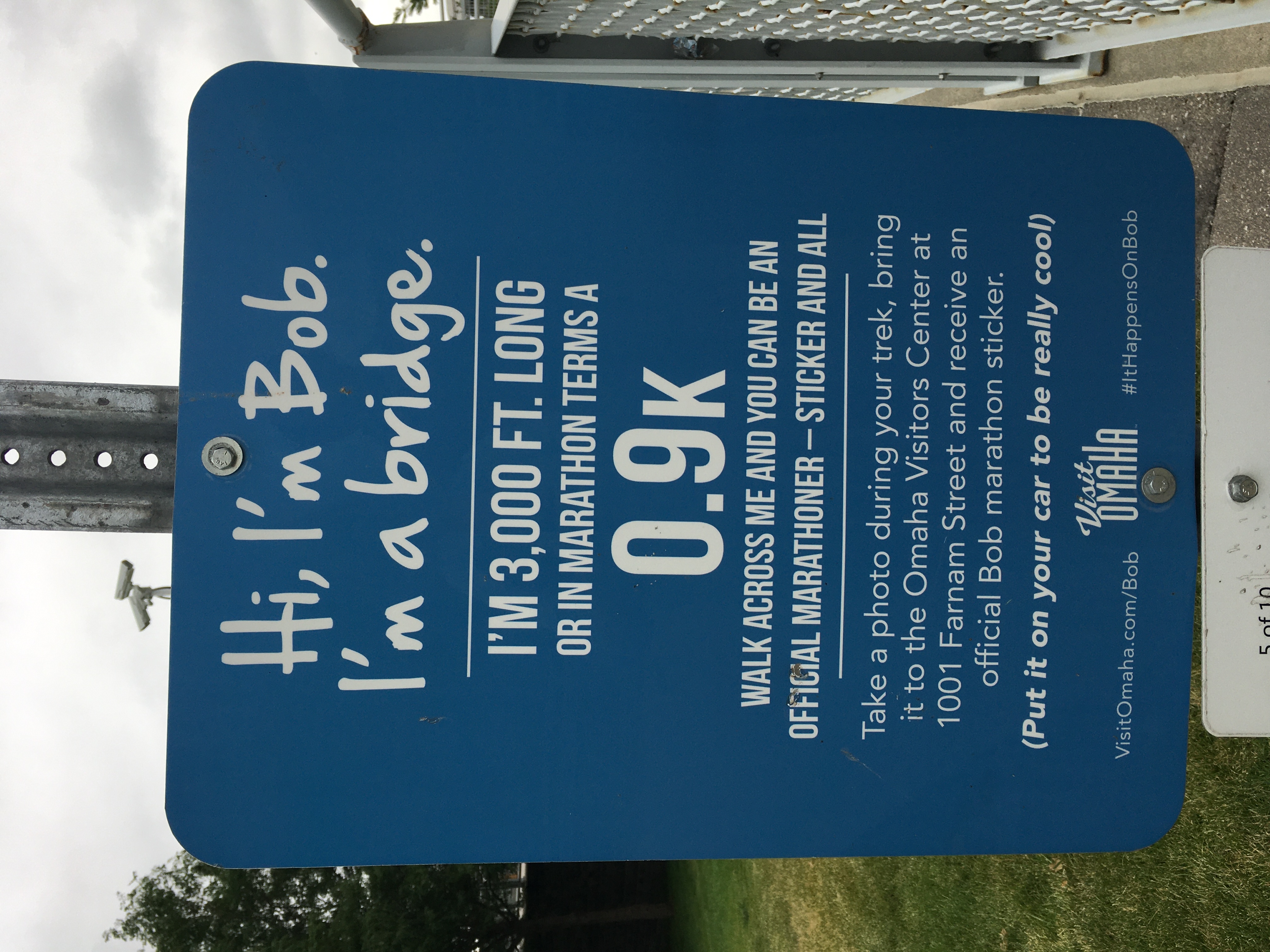
You’ll have to tilt your head – – or your device. : )
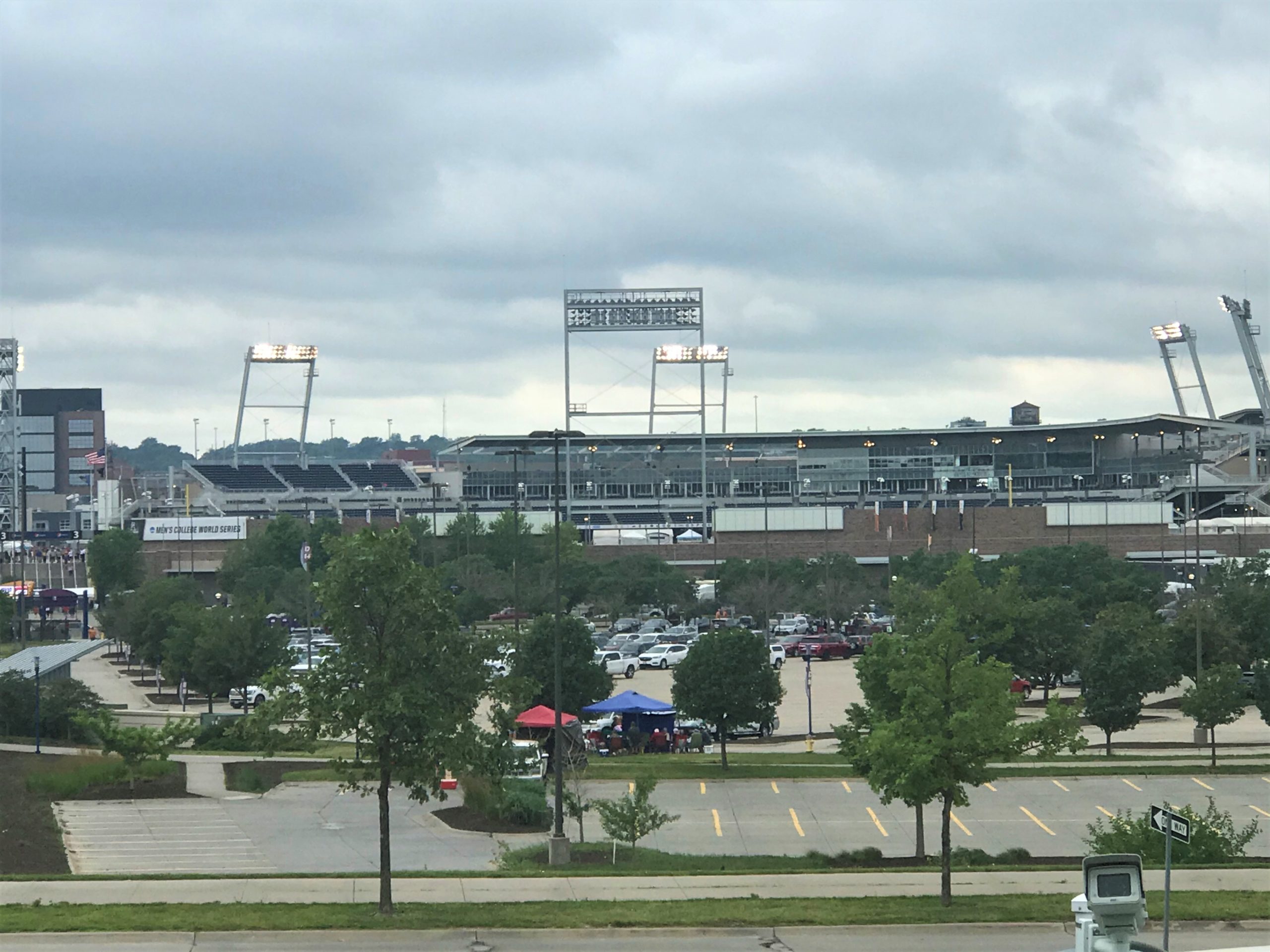


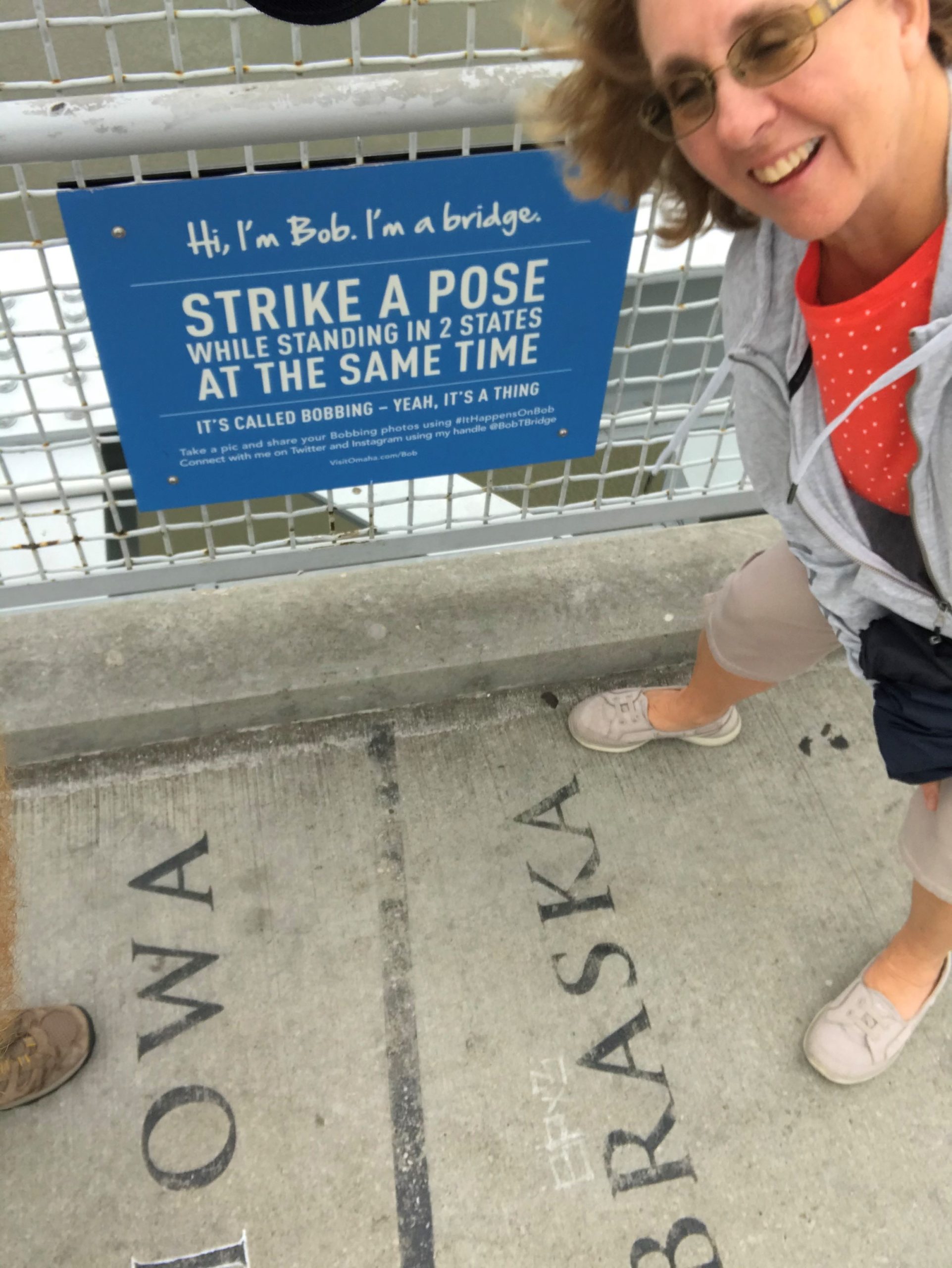



Guess what? Nebraska passed a new law this year. Fireworks can be sold from June 25-July 4, and also on December 29 & 30. And guess what else?? You’re allowed to shoot them off from June 25-July 5, and December 29-31 from 8am till 11pm or midnight depending on the day. We heard people taking advantage of the new law tonight.
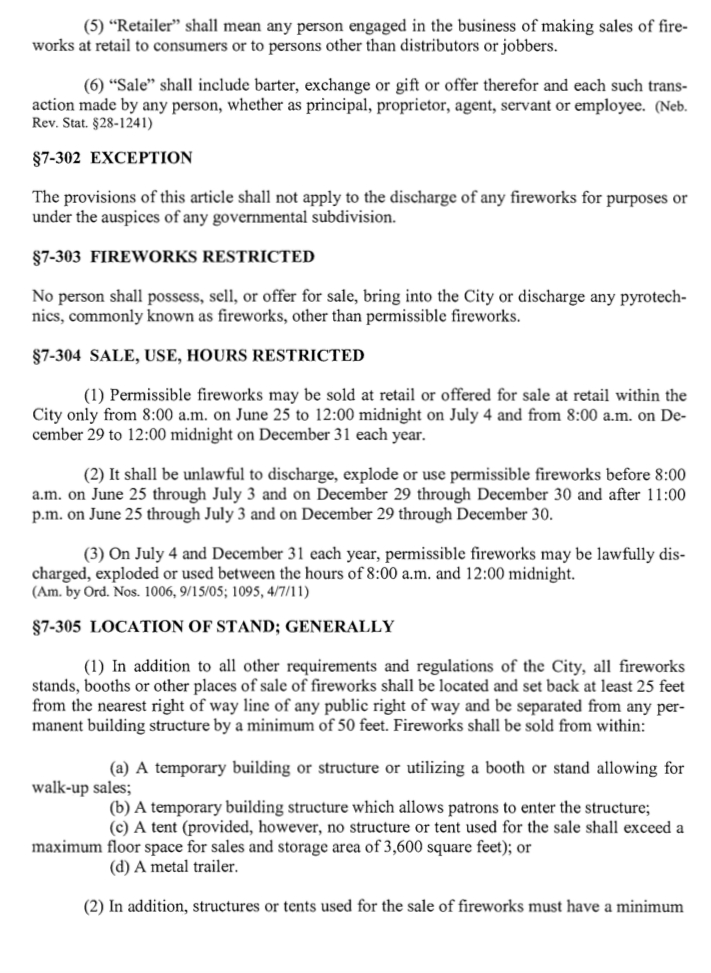
And that’s it for today. Another busy day!
